Previous Episode
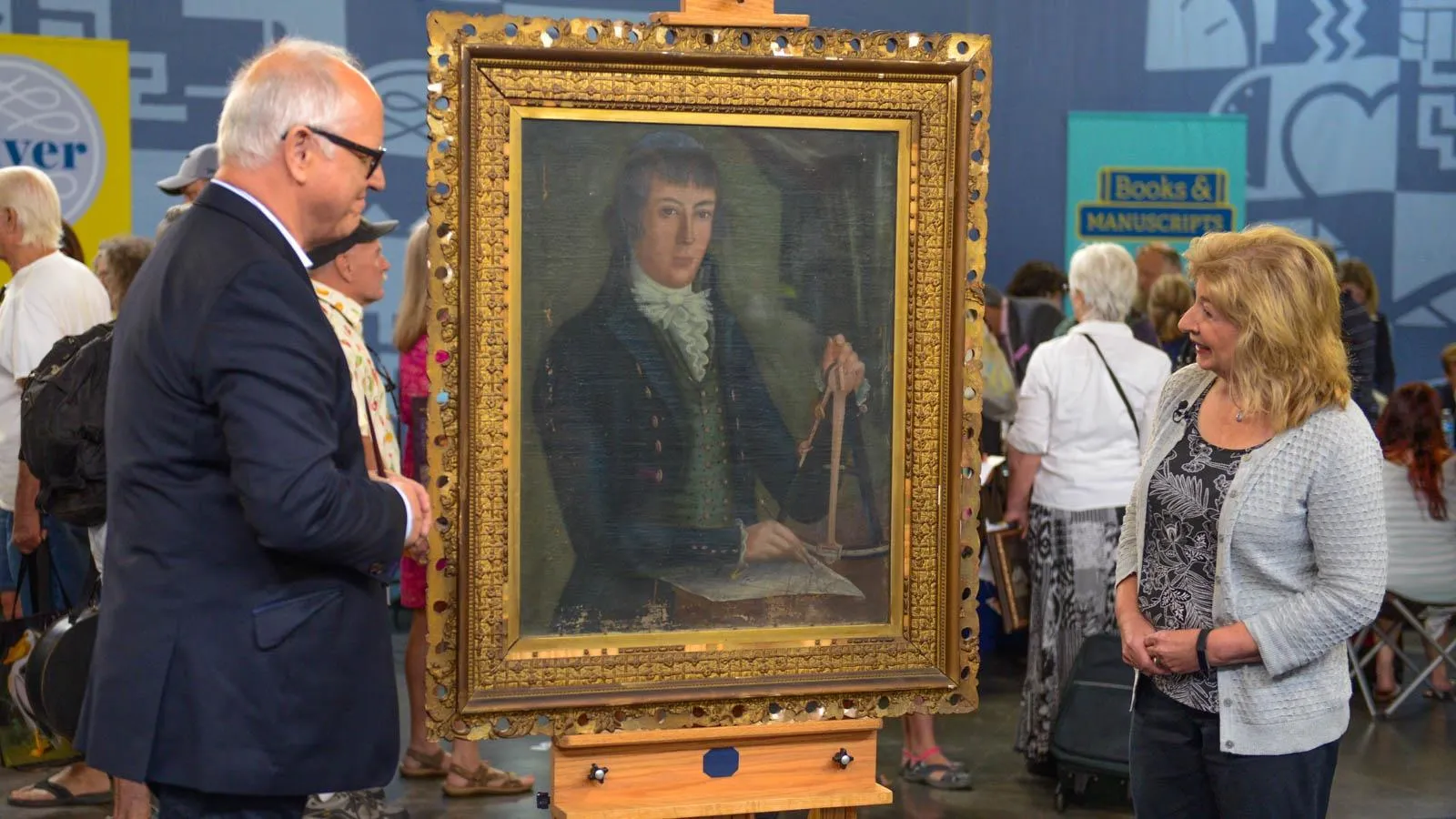
episode
Thrills & Chills
Trick or treat yourself to ROADSHOW's thrilling and chilling Halloween special!
Next Episode

episode
Vintage Dallas, Hour 1
Everything is bigger in Texas, including an updated $150,000 top find!
Travel back to 2009 for terrific Tennessee treasures, like a $25,000 to $35,000 find!
HOST: Come along as ANTIQUES ROADSHOW visits Chattanooga, Tennessee.
APPRAISER: Okay, you can stop shaking now.
GUEST: Oh, I'm... (laughs)
APPRAISER: I'm ready to hold you up.
GUEST: I love it, love it, yes!
ALL: ROADSHOW! (applauding)
CREW: Have a great day, everyone.
HOST: In 2008, ANTIQUES ROADSHOW took a trip to the Volunteer State, Tennessee.
ALL: Welcome to Chattanooga!
HOST: Where our experts volunteered their time to dig through thousands of objects in hopes of discovering TV-worthy treasures. We're shining the bright lights on these prized possessions again to find out if their value has gone up, down, or stayed the same in this second hour of "Vintage Chattanooga."
GUEST: I purchased it from a friend of mine.
APPRAISER: Okay.
GUEST: And he handled the affairs of a couple from England. They had some very beautiful things, and this was something that I managed to latch onto. I knew that, um, just by association...
APPRAISER: Yes.
GUEST: ...that this would be something special.
APPRAISER: Other quality pieces.
GUEST: Yes.
APPRAISER: Okay. This is a very fine quality, early Regency cellarette.
GUEST: Mm-hmm.
APPRAISER: Made about 1810. Typical of the Regency period. We see these beautiful crossbanded edges here, crotch-figured mahogany on this dome top. It's the best quality.
GUEST: Wow.
APPRAISER: And as we go down the front, we have a wonderful satinwood inlay escutcheon. It's all book-matched. And then palmettes, which, Egyptian-style, from the Regency.
GUEST: Yeah.
APPRAISER: They did a lot of these in the Regency style. Reeded legs on casters. So it was a movable wine cooler. And if we open it up, we can see here inside these dividers, of course, to hold the wine bottles. So these were used in the dining room. Now, what's really interesting about your cellarette is this history inside. What do we have here?
GUEST: We have a newspaper account from...
APPRAISER: Right.
GUEST: ...I believe, 1898.
APPRAISER: And here we have a "movable gardevin," "round-topped, brass claws and handles, and running on casters." And here we have "Byron's gardevin," 1898, and it mentions "from the Newstead sale."
GUEST: Yes.
APPRAISER: Now, Lord Byron is one of the great Romantic period poets.
GUEST: Yeah.
APPRAISER: He was born George Gordon Byron.
GUEST: Hmm.
APPRAISER: 1788 to 1824. At the age of ten, his great-uncle died.
GUEST: Wow.
APPRAISER: And he became Lord Byron.
GUEST: Wow.
APPRAISER: He inherited an incredible estate-- this huge castle. He was known as a character. He had a pet bear. He was outrageous, eccentric. He wore the wildest clothes. After going to school at Cambridge, he went, eh, to this castle and threw w, wild parties. He apparently had a skull...
GUEST: Lived like a rock star.
APPRAISER: A human skull. Yeah, he lived like a rock star.
GUEST: (laughs)
APPRAISER: He had a skull that he passed around that the people would drink wine out of.
GUEST: Oh, the chalice, right. Which, I mean, the wine could have maybe come from this, yeah.
APPRAISER: That's right, that's right. And you brought along a, a portrait of Byron, and he was a handsome guy. One of the ladies who had a love affair with him at one time, Lady Caroline Lamb, once said he was "mad, bad, and dangerous to know."
GUEST: (laughing)
APPRAISER: And she wrote that the first night she met him. So he was, he was quite a character. Only lived till 34 years old, but during his life, he did some amazing things. Without the provenance, as a Regency mahogany cellarette, great quality, auction estimate would be $6,000 to $12,000. What did you pay for it, by the way?
GUEST: I think it was right in that neighborhood-- $6,000, $6,500, yeah.
APPRAISER: Okay, okay. But given all the history, this could be an auction estimate in the range of about $20,000 to $30,000. This little portrait alone is worth about $1,000 to $1,500.
GUEST: That's amazing. That is truly amazing.
GUEST: Approximately 20 years ago, my mother and dad, who were in the antique business, purchased this item at a private estate sale, and the price was approximately $500. Never have known too much about it. Has some diamonds on it that we can tell. Has the Lord's Prayer inside. Very unique item, and I've always wondered about it. Um, and about two or three years ago, she gave it to me.
APPRAISER: Okay. Now, we mentioned the diamonds and they're in the form of a cross. Do you know what kind of diamonds they are?
GUEST: I believe she thought they were mine-cut diamonds.
APPRAISER: Ah, good, a good guess, but not correct. They're rose-cut diamonds, the difference being, the rose-cut has a flat bottom and fewer facets on top. Typical for the period when this was made: 1850 to about 1865.
GUEST: Gosh, that old.
APPRAISER: Now, surrounding it is that blue guilloché enamel, where they do some engine-turning or engraving underneath in the metal, and then they put the translucent blue enamel on top, and you get that nice finish. The enamel was most probably done in France. And we turn it around and we open it up, and you can see the Lord's Prayer there. I'm not doubting that that's been there a long time, but it may have had something else in there.
GUEST: I see.
APPRAISER: You know, earlier in its life. Very possible, could have been some other inscription. If you look to the other panel, when we open it up, we see the movement to a watch. And this is a little bit of the surprise we're going to show everybody. Okay, there's the front. Now, we'll talk about the movement. The movement is most likely Swiss. There aren't any markings on it. You can see the enamel from the back is carried over to the front, with the rose diamonds, also. We call these things objets de vertu. An object of virtue, if you will. It's just so sweet and so pretty. You just don't see ‘em like this too often. I would say, at auction today, in the neighborhood of somewhere from $2,000 to $3,000.
GUEST: Goodness gracious.
GUEST: I brought a poster that's been autographed. My husband, um, found it in a photo album.
APPRAISER: Okay.
GUEST: Paid five dollars for the photo album with all the material in it.
APPRAISER: They're best known as the original Celtics. They're the New York Celtics. Not the Boston Celtics, the, the New York Celtics. And in the 1930s, they regrouped as a barnstorming team, and that's when they showed up here in Chattanooga to play the Maryville College. So, at auction, it would sell for eight, $800 to $1,200.
GUEST: Wow, good, thank you.
GUEST: Well, I showed you this letter opener, which I was told was a Fabergé.
APPRAISER: I'm gonna tell you right off, it's not Fabergé.
GUEST: (groans)
APPRAISER: Oh, I'm sorry. All the hallmarks are good. The people that make reproductions have all these lists, and they can put anybody's name they want on it.
GUEST: Uh-huh.
APPRAISER: And they are making these today, but this is an old one. This is probably somewhere around 30, 40 years old. Uh, what did you pay for it?
GUEST: About $3,500.
APPRAISER: All right. Now, if we sat down and tried to make this today, a good one, it's going to cost you somewhere around that. So you didn't go too far off.
GUEST: Mm, mmm.
APPRAISER: All the stones are real. If this was a real Fabergé, it's worth $30,000.
GUEST: Oh, okay.
GUEST: This is a picture that my dad got at an auction in the late '60s in Burlington, Iowa. And he was bidding on the picture, somebody else was bidding on the frame, and my dad won it for about $30. And the thing that I like about it is that there's not a single internal combustion engine on here; it's all horses. And, of the brewery, this is the only part that was ever actually built. None of the rest of this was built.
APPRAISER: There are no internal combustion engines on here, which is a great way of noticing that it's really early.
GUEST: Mm-hmm.
APPRAISER: The Moehn Brewing Company went out of business during Prohibition. This print was done very shortly after the factory opened, and it would have been a projection of what they thought would happen, given the great sales they were having with beer.
GUEST: Okay.
APPRAISER: You can also sort of date it, uh, not just historically, but visually, given the bottles of beer that they show here, with the labels and the tops, which are also consistent with the pre-1920 era.
GUEST: Okay.
APPRAISER: $30 would buy a couple of six-packs of beer today.
GUEST: (laughs): Yeah.
APPRAISER: I think overall, as an investment, though, it's done very well for itself. As an early American advertising poster advertising beer... Actually, there's a great word for it. We call it breweriana.
GUEST: Okay.
APPRAISER: I would suggest that, at auction, this piece would be estimated $1,500 to $2,000.
GUEST: Wow.
APPRAISER: The details are fantastic, the condition is fantastic, and it's a treat to see it. It makes me thirsty.
GUEST: (laughs) Thank you very much, I appreciate that.
APPRAISER: You're welcome, I'm glad you brought it in.
GUEST: This is a silver soup tureen that has been in my family for several generations. My great-grandmother was from Louisiana. I suspect that this was maybe from her father and mother. My great-great-grandfather's older sister married Braxton Bragg, who was a Confederate general.
APPRAISER: So this perhaps was in that part of the family, as well?
GUEST: It could be, we don't, I don't know.
APPRAISER: Mm-hmm. What's interesting about this is the parallel with the, uh, Southern heritage, is that this a piece of Southern coin silver. Uh, there were a lot of silver manufacturers in the United States when this was made before the Civil War, probably, uh, circa 1840, 1850. And the majority of the silver manufacturers were in the Northeast, as was most of the industry in the United States. The Southern states were primarily agrarian communities.
GUEST: Mm-hmm.
APPRAISER: And there were not a lot of silversmiths there. So, by the nature of there not being a lot of silver made in the South, examples are much more rare. Additionally, the Civil War was fought primarily in the South. There was a lot of looting.
GUEST: Yes.
APPRAISER: Soldiers stole lots of things.
GUEST: Yeah.
APPRAISER: You hear stories about family silver being buried in the back yard all the time.
GUEST: Mm-hmm.
APPRAISER: And a lot of the silver that was made did not survive. This is an unusually large piece of silver, made by a New Orleans silversmith. And if we turn it over on its side... It's very clearly marked with the maker's mark, which is "Hyde & Goodrich." And they went into business in 1816 and made very, very fine silver. This is probably one of the best examples of, of an item that they could have made. It is based on a traditional English form with the gadrooning borders here.
GUEST: Mm-hmm.
APPRAISER: And the cast lion handles, with the ring in the mouth. And you have this wonderful dog f, finial.
GUEST: Okay.
APPRAISER: Which corresponds to the hunting. The dogs would have been used to hunt.
GUEST: Okay.
APPRAISER: It's chased very nicely with this beautiful Victorian chasing, and it's quite heavy. I weighed it before we came on camera and it weighs about 100 ounces. It is coin silver, which is, uh, not sterling silver. It's a, a lesser mix of silver.
GUEST: Oh, okay.
APPRAISER: And a higher percentage of alloy than sterling silver. But it's nonetheless a very, very exceptional quality. I consulted with a few of my colleagues, and we think that if this were to come up at auction, conservatively, it would bring between $10,000 and $15,000.
GUEST: (gasps): Really?
APPRAISER: Yes.
GUEST: (laughs): Wow.
GUEST: Bob Ingram was my great-uncle.
APPRAISER: Mm-hmm.
GUEST: And they lived in Atlanta, and they were members of the East Lake Golf and Country Club...
APPRAISER: Yep.
GUEST: ...in Atlanta, and that's where he met and became friends with Bobby Jones.
APPRAISER: And they played golf together.
GUEST: They played on a regular basis.
APPRAISER: '30s and '40s?
GUEST: In the '30s and '40s.
APPRAISER: Did they play at Augusta, too?
GUEST: I can only assume that they did, because my uncle was a member at Augusta, as well, and, um, had standing yearly tickets at the Masters.
APPRAISER: Wow. And these Bobby Jones actually gave to your great-uncle.
GUEST: He did.
APPRAISER: You know, a lot of people would say that Bobby Jones was the Tiger Woods of his era.
GUEST: Yeah?
APPRAISER: No. Tiger Woods is the Bobby Jones of today. Bobby Jones won 23 out of 52 tournaments he entered in the '20s, and he culminated his career in 1930, at the age of 28, winning the Grand Slam, which at the time, U.S. Open, British Open, U.S. Amateur, and British Amateur. With Bobby Jones, it was only the beginning. He signed a contract with Warner Brothers to do 18 instructional films. He gave up his amateur status, which a lot of people don't know, because he was paid well over $100,000 to do these films. He developed golf clubs with Spaulding. He was in World War II as a lieutenant colonel and an intelligence officer. And in 1934, best known, he started the Masters, helping to design the course with Alister MacKenzie and helping to put together the club with Clifford Roberts. Now, in the '50s, that's when Augusta became really famous. 1954 is when this piece was made. This was done by Dwight Eisenhower.
GUEST: Right.
APPRAISER: Very few people know that Dwight Eisenhower, as well as being a president, was not a great golfer, but he was a pretty good artist. And he was very close to Bobby Jones. They actually knew each another from World War II. But he joined Augusta-- he became their most famous member-- so no wonder, in 1954, he did this for Bobby Jones. So, what I'm suspecting here is that because your great-uncle and Bobby Jones were good friends, this was probably a gift in the '50s to him.
GUEST: Okay.
APPRAISER: Another thing that Bobby Jones did was this book, Golf Is My Game. It's a series of books that he actually did. This is early '60s.
GUEST: Okay.
APPRAISER: Now, these signed books are fairly common, and they sell anywhere between $800 and $1,500.
GUEST: Okay.
APPRAISER: This you don't see. My auction estimate is $3,000 to $5,000, and it could even be a bit higher.
GUEST: Okay. We try to be conservative.
APPRAISER: Thank you so much.
GUEST: There was a note in the box with her clothes that said she was brought from France in 1868. And she belonged to my great-aunt. She never married. And we got to see the doll and even, now and then, we'd get out the clothes and see the clothes, but I inherited her about 15 years ago.
APPRAISER: It's true, what you have is a French doll, and the dates that were on the doll are correct, about 1868 to 1870. The doll is very nice by itself, but the clothing...
GUEST: Mm-hmm.
APPRAISER: ...is really extra-special. In the collecting world, we call this a trousseau, or a wardrobe...
GUEST: Mm-hmm.
APPRAISER: ...accompanying the doll. And what's nice is, every dress that you have is made the same pattern, the same period. So, we know that these clothes have always been with this particular doll.
GUEST: Right.
APPRAISER: The doll is what we call an FG doll. It was made by François Gaultier. She will be marked on her shoulder, usually this shoulder, but her fabric of the body covers that. The bodies were made by another company. The body was made by Gesland.
GUEST: Okay.
APPRAISER: And we weren't able to undress it. I didn't want to take the chance of, uh, harming the clothing.
GUEST: Mm-hmm.
APPRAISER: But underneath the clothing, there's a body of fabric with a metal armature. Her hands are beautifully molded of bisque. She also has legs that are molded of bisque. And I think you were asking me what these pockets were for.
GUEST: Especially on a petticoat. How would you get to it?
APPRAISER: Well, this truly isn't a petticoat. It's the bottom part of a white dress.
GUEST: Oh, okay.
APPRAISER: And it could have been worn over a color, and maybe that was a silk dress that's disappeared. But this particular pocket was made for a fan.
GUEST: A fan?
APPRAISER: See how long and narrow it is?
GUEST: Right.
APPRAISER: They would just fold the fan and put it in the pocket. She also has a fan pocket on this dress over here.
GUEST: Right.
APPRAISER: She has a purse.
GUEST: Mm-hmm.
APPRAISER: She has a hat. She has all of these dresses, and what's nice, they're made in cotton. They have the original buttons that are early. And she also has the extra underwear over here.
GUEST: Mm-hmm.
APPRAISER: Now, do you have any idea as to its value?
GUEST: Well, because of the damage-- she's had a, one foot has been replaced, and she had a crack on her breastplate. So, I don't really know.
APPRAISER: Okay, the doll itself, it's an unusual doll, but because of the damage, the value of the doll would come down. But because of all of the clothing and the doll, I would, on the retail market today, put a value of $5,000.
GUEST: $5,000? Oh, my goodness! No, I didn't expect that. I thought maybe $1,000, but I sure... You know, because of all the damage, I thought, "Well, that really took the value." $5,000. Oh, well, thank you so much. When my sister sees this...
APPRAISER: Yeah.
GUEST: ...she's going to wish she had gotten the doll instead of... (laughing): Something else.
GUEST 1: My grandfather gave it to me in the '60s, and it was, I think, his great-grandfather's, who was a missionary doctor with Indians in the Plains, and it was a gift to him.
APPRAISER: It's, it's so refined and so beautifully made. I suspect that it’s Otoe-Missouria, or Osage. It's made out of an elk horn, off the tine of an elk's horn. And what do you think it's worth, Raleigh?
GUEST 2: Um, $5,000 to $6,000.
APPRAISER: Do you have any ideas?
GUEST 1: A couple thousand.
APPRAISER: Let's split the difference. I think it's probably worth between $4,000 and $6,000.
GUEST 1: Great.
APPRAISER: That's pretty good for a piece of elk horn, isn't it?
GUEST 1: It's awesome.
APPRAISER: Yeah. It's really a beautiful thing, and to get one that's this beautifully decorated is really nice.
GUEST: My husband owns one of the oldest hardware stores in Georgia, and we have five of these cases of knives that had been used for display.
APPRAISER: These display cabinets really grew out of the great expositions of the 19th century. You could go through and add up what each knife is worth and you'd be missing the point. As a display case, I think a Schrade collector would be happy to pay $5,000, $6,000, even $7,000 for it.
GUEST: I inherited them from my late husband's parents.
APPRAISER: Uh-huh.
GUEST: I believe that they're Austrian, but that's about all I know about them.
APPRAISER: Right. These are called Vienna Bronzes. Uh, they were made in Vienna around the turn of the century, around 1900. And the leading maker of these was, uh, Franz Bergman. And you have one here that actually is signed with a F and a B for Franz Bergman.
GUEST: Wow.
APPRAISER: These are called cold-painted bronzes. Most bronzes have a patina on them that is applied with heat and chemicals.
GUEST: Mm-hmm.
APPRAISER: These, however, are actually painted, so these have an oil-painted finish on them. They're really wonderful.
GUEST: I love them.
APPRAISER: Mm-hmm.
GUEST: I can sit and play with them.
APPRAISER: Yeah, and they're in very good condition. In the last 20 years, they've really become very, very desirable as collectibles, and I think the least expensive ones, the simplest ones, they're worth between $150 and $200 apiece on average. So, for the group of 24, we're talking about between $3,600 and $4,800.
GUEST: My goodness.
GUEST: It was in my grandfather's house, and one of the neighbors had actually given it to my grandmother.
APPRAISER: Mm-hmm.
GUEST: Because she needed something to hang over the piano.
APPRAISER: Did she pay for it or did a trade?
GUEST: No. Just, gave a gift.
APPRAISER: Mm-hmm, okay. Well, it's a painting of a 17th-century artist, a Dutch artist by the name of Gerrit van Honthorst, who was, uh, born in 1590 and was a famous painter who went to Italy in the first quarter of the 17th century, and was influenced by a artist by the name of Caravaggio. And Caravaggio is known for his dramatic use of light. And the reason this painting is so dark is the fact that Honthorst specialized in these dark scenes. And we can see this contrast with the light and the dark here. We see over here, he's holding a compass and his palette there. But he did so many dark evening scenes, in Italy, he got to be known as Gherardo delle notti. This painting, it's also dark because it's, it's very dirty, you can see some of that here.
GUEST: Right.
APPRAISER: But there's something else about this painting, and that's revealed on the back.
GUEST: (laughs)
APPRAISER: Let's have a look at that.
GUEST: Okay.
APPRAISER: Well, as you can see it here, it's actually painting number 209, which is an inventory number.
GUEST: Right.
APPRAISER: And then it says "Gherardo delle notti"-- Gerrit van Honthorst's Italian name, Gerrit of the Night. And then it says "auto-ritratto." That's Italian for self-portrait.
GUEST: Oh.
APPRAISER: So it's a self-portrait of, of him. And then it says down here, it says "M. Garinei."
GUEST: Mm-hmm.
APPRAISER: This is a guy who is the actual painter of this.
GUEST: Okay.
APPRAISER: Behind that, behind the "Garinei," is this big, black blob.
GUEST: Yeah.
APPRAISER: Okay, did you ever wonder what that was?
GUEST: I always did, yes. (laughs)
APPRAISER: Okay. Somebody was very naughty one time and they crossed out where it said "copia," in Italian for copy.
GUEST: Mm-hmm. Okay.
APPRAISER: Okay, so what you have is a copy of a painting, a self-portrait of Gerrit van Honthorst, which is in a, in an Italian museum.
GUEST: Mm-hmm.
APPRAISER: These were very popular between 1840 and about 1940.
GUEST: Okay.
APPRAISER: Artists would go to the museums and they would paint the paintings there, and they would go out and they would sell them to American and European tourists...
GUEST: Right.
APPRAISER: ...who came through town. Down here is actually where the, the museum superintendent signed off on it.
GUEST: Okay.
APPRAISER: So what you have is a, a 19th-century copy of a 17th-century painting. Now, I mention this because it's important to, um, look at the backs of these paintings. Because they are old, many people confuse them with the real thing.
GUEST: Right.
APPRAISER: Well, I wish it were the original, but, uh, it's actually a copy. Probably worth about $2,000 at, at auction these days.
GUEST: Okay.
APPRAISER: Um, it was painted probably around 1890.
GUEST: Okay. It's still good. I had always, because of what was on the back, even though I couldn't read it, for some reason, I felt like it was an off-the-rack tourist piece. (laughs)
APPRAISER: If this were original, I would think it would probably be somewhere between a half-million and a million dollars at auction.
GUEST: Okay. That'd be nice. (laughs)
APPRAISER: It sure would, yeah.
GUEST: I brought in, um, a clock that has been in the family for pr, approximately, oh, 40 years or more. My father, uh, was a clock collector, and he was stationed in Germany in the late '50s-early '60s. And while we were over there, he purchased this clock. He used to name his clocks, and this one he named Andreas. It was my favorite clock, and I had it in my room when I was a little girl. And then, when I turned 30, he gave it to me as a birthday present.
APPRAISER: Okay, well, what you've brought in is, uh, what we call a winking-eye clock. And this particular clock is, uh, probably of German Black Forest origin. Possibly Swiss, but more likely German. And that means that it has a movement that's made out of combination of steel and brass gearing. And then it also has a wooden frame. Now, this particular type of construction you see a lot in cuckoo clocks and other types of clocks from that area. The construction of the case is very interesting. Here we have a clock that looks much like a picture frame that frames a wonderful chromolithograph picture of a, probably a Bavarian or a Swiss hunter right before he's going out for his expedition. The colors and the condition of this thing are really outstanding. I mean, there's his felt hat, his really nice, trimmed mustache. Again, they made many, many clocks in that region, probably hundreds of thousands annually. But what really makes this clock quite special, other than the fact that it's in such great condition, when this clock is running, his eyes will actually move back and forth as the pendulum swings, and that really sets it apart. Any time you add automation to a clock, it changes it from just a strictly horological timepiece to something that's whimsical and fun to have. Made about 1900. You may notice that there's a name, Karl Lech. Uh, that name may actually represent the person that did the coloring for the chromolithograph. Another reason why it's in such great condition is, it has this glass to protect it overall. If it didn't have the automation, it wouldn't be something that would be particularly valuable. But because it has the automation, uh, feature to the clock, it makes it really desirable. A clock like this I could see quite easily selling in a retail shop or at a well-placed auction somewhere in the neighborhood of $1,800 to about $2,000.
GUEST: Oh, my father would be thrilled. I love the clock. It's, it's al, it's entertained me since I was a little girl.
GUEST: This box was given to me by a dear friend and mentor in Houston, Texas. And she didn't have any family, so she had some treasures that she gave to people that she loved. And she's since passed on, so it's very special to me.
APPRAISER: Now, you had said that you just considered it what, just a...
GUEST: A, a box, a pear box.
APPRAISER: A pear box.
GUEST: It's, it's what I've always called it, a pear box.
APPRAISER: Okay. Actually, what it is is, it's a tea caddy.
GUEST: (inhales): It is!
APPRAISER: And this would have been made in England in the early part of the 19th century. Made about 1800, 1810. It would be called a Regency tea caddy. And they made it in the shape of a pear, and they made other tea caddies in the form of other fruit. You find apple-form tea caddies, in particular. Given that it's shaped like a pear, what do you think it's made of?
GUEST: Pear wood?
APPRAISER: That's a very good guess.
GUEST: (laughs)
APPRAISER: And that's exactly right. And we just call them fruitwood. And this is a particularly good example. It has a lock in the front. Tea was extremely valuable during this time period. So, if you had this set up on a sideboard, you didn't want anybody coming in and sort of going, "Well, I think I'll help myself to a couple of spoonfuls of tea here." And they were terrific form-- nice, whimsical, fun form...
GUEST: Uh-huh.
APPRAISER: ...that people had. We have, also, some problems with it. It's not perfect.
GUEST: Right.
APPRAISER: And in fact, the first thing I'm going to point out is right here. Now, that is called a finial.
GUEST: Mm-hmm.
APPRAISER: And if you were staring at a pear, would you expect to see an acorn on top?
GUEST: No. (laughs)
APPRAISER: You would expect to see a little stem.
GUEST: Right.
APPRAISER: Well, chances are, at some point during its life, it's had its finial changed. So, it has a replacement there. We can take the top off. We have a broken hinge at the back here.
GUEST: Right.
APPRAISER: And on the bottom and to the side, we have these splits that go through the wood. And this is caused by the wood shrinking and pulling apart over time, but that's a good indication of age. I'll tell you, on one of the positive sides is, it has very good color, and the color's a nice go, almost like a golden pear. And actually, it looks like it might have had traces of some red stain here, but it's been so long...
GUEST: Uh-huh.
APPRAISER: ...since it's been gone, that it really, it's acquired just a wonderful natural color after that. Also, what they all have, all the real ones-- and they're making fake ones today-- they all have this funny little plug in the bottom. That is something that all the old ones have that the new ones do not. So, if anybody out there is ever looking to see...
GUEST: Uh-huh.
APPRAISER: ...if they have an authentic one, look for that plug. Any idea as to value?
GUEST: Well, I thought if it was worth $80 or $100, I'd be thrilled.
APPRAISER: Well, at auction, how does $3,000 strike you?
GUEST: (laughs) (inhales deeply) Wow. (laughs): I'm in shock.
APPRAISER: I knew you'd like that one. Yeah, yeah, yeah.
GUEST: I love it, love it, yes!
APPRAISER: This is Chinese.
GUEST: It's Chinese?
APPRAISER: And it's 17th century. That's transitional Ming to Qing Dynasty.
GUEST: Oh, I... Oh!
APPRAISER: Okay?
GUEST: Okay.
APPRAISER: And it's gilt bronze. It's missing its stand.
GUEST: It's...
APPRAISER: It would normally stand up.
GUEST: Yeah.
APPRAISER: On a base.
GUEST: That's...
APPRAISER: But it's missing the base. Um, it's of the finest-quality metalwork you can see anywhere.
GUEST: Okay, yeah.
APPRAISER: It's extraordinarily well-done. The best gilt bronze, and this is gold bronze done beautifully by the Chinese. And, what he is...
GUEST: Uh-huh.
APPRAISER: ...is the god of war. Value, at auction, I would say $1,500, that's one thousand, five hundred, to $2,500.
GUEST: Oh, really?
APPRAISER: It's a beautiful piece.
GUEST: Years and years ago, my mom and dad were at a auction, and my dad heard my mom saying, "Honey, honey! Come here! Come here!" And that's when she bought that lamp, and it was $50.
APPRAISER: The lamp is made by a company called Handel. This is what's called an overlay lamp, or a panel overlay lamp. (chuckling): And it has this wonderful, very, very warm tropical scene.
GUEST: Yes.
APPRAISER: These great palm trees and this sunset scene that's going on all around it, it's, it's an extremely inviting, pleasing lamp. The palm tree overlay decoration that's on this piece is one of the more desirable designs that they did. They did several other overlay designs, as well. I would tell you that if this piece came up for sale on today's market, it would sell in the neighborhood of about $4,000 to $5,000 at auction.
GUEST: Wow.
APPRAISER: Okay?
GUEST: (laughs)
GUEST: I live next door to a lady who... Her husband had in, inherited a large amount of jewelry and, um, land from a family in Portsmouth, Ohio. And I watched her wear this necklace all my life. And around 2004, they had a sale, an auction. And this was in a boxed lot, which I paid $170 for.
APPRAISER: This is what we call Egyptian Revival. And when they brought artifacts out of Egypt in the 1920s for the museum, there was Egypt-mania. It's European. The stone was carved in Germany. The pearls are real. The pendant and the beads are carved out of citrine, which is a semi-precious stone. And the carving on the large pendant is an Egyptian Revival... Don't go over on me now! (laughing): It's okay.
GUEST: Okay, I'm fine.
APPRAISER: It's okay-- this is like winning the lottery.
GUEST: It is?
APPRAISER: You did really good. It's white gold.
GUEST: Mm-hmm.
APPRAISER: It's real gold. And the Egyptian carving in the citrine makes it very special...
GUEST: Mm-hmm.
APPRAISER: ...because that's like carving a cameo in a hard faceted stone.
GUEST: Mm-hmm.
APPRAISER: And a lot of work went into this piece, and it's very collectible. At retail, in a jewelry store that sells this kind of estate jewelry, they would command about $4,000 to $4,500...
GUEST: (gasps)
APPRAISER: ...for this piece of jewelry. So, for $175...
GUEST: Amazing!
APPRAISER: ...you did great.
GUEST: Thank you.
APPRAISER: Okay, you can stop shaking now.
GUEST: Oh, I'm... (laughs)
APPRAISER: I'm ready to hold you up.
GUEST: These pieces came from my dad's family. I'm about, oh, 13th generation. The first member of this line... ...came over in about 1630. They ended up in Providence, Rhode Island. These were part of my Providence heritage of a lot of seafarers, and they've always been mine-- given to me. I can remember as a little kid having 'em.
APPRAISER: It’s the USS Frigate President and the British ship Endymion. These were probably done after 1830 and before 1850. There's an 1830 edition of a book called Bowen's Naval Monument, which was published in Boston. This one is beautifully carved with a scene identical to one in Bowen's.
GUEST: Wow.
APPRAISER: But then you start looking and there are little extra details in the lower section here and then a very interesting inscription underneath, and it tells about the Endymion and the USS President. An interesting thing that I noticed is: at first, I thought these teeth were probably carved by two different carvers, but it's now my opinion that the scene from Bowen's was probably carved by one person, and then the little extra details were added by another person who wasn't quite as formal a scrimshander, and he'd be more country or more folk art, which is what we, we like so much. This tooth is done entirely by the folk artist. It has the American ship with the flag, an American eagle over here, this is probably a picture of home, and then there is this wonderful exotic plant here, but the greatest thing, I think, about this tooth is when you turn it over, there is this wonderful inscription. You have to remember that these sailors would spend a great deal of time at sea hunting the, the whales. A voyage may last over two years, so they had a lot of time to think about home, and when I saw this one and the wonderful motto on it, it tells the romance of the sea and the sailors who were out to sea so long. The inscription is: "When the evening sun declineth upon the silent seas Evening stars so sweetly shineth Then dear girl, think of me." These teeth do have a little bit of a condition problem which I would not do anything about. It's sort of normal to find them. And where the two teeth go together, that they're a beautiful combination that have always been together. I would never separate them. And in my opinion, the retail value is $25,000.
GUEST: Wow.
GUEST: I got them in Chattanooga. I like to go to antique malls and stuff about a couple of times a year, and I saw these on the bottom shelf of a display case, and I's, thought they'd really look great in my house, so, I looked at them and I paid $350 for them.
APPRAISER: Okay, well, that's a lot of money.
GUEST: It is.
APPRAISER: So why did you pay that much money for them?
GUEST: Well, I've, I've looked through books and stuff, and I've seen some that looked sort of like that. I've especially seen ones with seashells on them in books.
APPRAISER: Right.
GUEST: Are these by the same people?
APPRAISER: Well, let's take a look on the bottoms of them.
GUEST: Okay.
APPRAISER: And I understood that you researched these marks.
GUEST: Well, I looked and found that they're Flight & Barr by Worcester, I hope. (chuckles) And that they're early English porcelain.
APPRAISER: Well, you're absolutely right. They are early Worcester. And there's really interesting marks on the bottom. First of all, there's, on this one is a red painted mark that says "Flight & Barr, Worcester." And then an abbreviation which says "Manufacturers to their majesties."
GUEST: Oh!
APPRAISER: And that would refer to King George III and his wife.
GUEST: Oh.
APPRAISER: There is another mark, which is rather faint which you may not have noticed. Each of them have the faint letter B. It's incised. And that mark was used from 1792, and they're usually considered to be used until about 1803. The other, hand-painted mark is used as late as 1807. So we pretty much know they're going to be early 19th century or very late 18th century. Now, one interesting thing about them is, they're not a true pair. If you look at this vase here, you can see on the side of it is a little notch in the design...
GUEST: Mm-hmm.
APPRAISER: ...and this one goes straight up.
GUEST: I had noticed that.
APPRAISER: So... And, and, and, and that's not something that most people would immediately notice. So, they were obviously made by the same factory but made at a slightly different time, but then probably sold together new, because if you ever lost one of these vases and you wanted to find a matching vase, you'd probably never find one even though they possibly exist.
GUEST: No.
APPRAISER: What's really great about these vases is the hand-painted botanical scenes on the front, of the flowers, which is really spectacularly done. English porcelain-making was reaching its zenith near this time. In the 18th century, it was primarily influenced by Chinese export porcelain and German porcelain, like Meissen. But right at the turn of the century, starting around 1800, they started making their own designs. And this is something that the English excelled at, is these wonderful reserves with botanicals.
GUEST: They were painted by the same person, you think?
APPRAISER: I, I feel relatively sure that they were the same artist. And actually, if we had more time to do some research, we might even could attribute them to a specific artist at the factory.
GUEST: Okay.
APPRAISER: Another interesting thing about these vases is the beautiful pale green color.
GUEST: Mm-hmm. I was going to ask about that.
APPRAISER: And people think that it's kind of an unusual color...
GUEST: Mm-hmm.
APPRAISER: ...but actually, this was a very popular color during that time period.
GUEST: Okay.
APPRAISER: You said something about, is this the same company that did the shells?
GUEST: Mm-hmm.
APPRAISER: Yes.
GUEST: Okay.
APPRAISER: Sometimes you'll see similar vases with shells or hand-painted feathers, and those are also very popular.
GUEST: Okay.
APPRAISER: Now, these particular vases, because they are in great condition, which is, at this point, 200 years after they're made, it's really hard to find vases that are in great condition and the pair is still intact, I would say that a retail value for these would be between $3,000 and $4,000. Now, had they been painted with shells or feathers...
GUEST: Mm.
APPRAISER: ...the value would've been closer to $10,000 to $20,000. But the flowers are still magnificent.
GUEST: I love the flowers.
APPRAISER: Absolutely beautiful.
GUEST: Porcelains like this with the paintings on them are things I really like, and I never expected to be able to afford one. So when I saw those, I snapped them up and hoped. (chuckles)
APPRAISER: You made an excellent buy, paying $350.
GUEST: Thank you. Thank you.
GUESS: My boss gave me this print. His uncle had passed away and he inherited this, and it hung over our coffee machine at work, and I admired it every day. (chuckles)
APPRAISER: Right. And what did you want to learn about it when you brought it in to me?
GUEST: Well, I wanted to learn is it actually a print, is it a charcoal, uh, lithograph?
APPRAISER: It's by Thomas Hart Benton, who is probably one of the most famous American artists of the 20th century. And it is a lithograph. It's an original print. You asked me if you, i, if it was a drawing or a lithograph, you weren't sure, and it's a valid question, because a lot of lithographs have that chalk drawing quality, like this does. And Benton did sign it down here. That's a pencil signature.
GUEST: Okay.
APPRAISER: He was a prolific printmaker. He made several hundred lithographs, and this is actually one of his last prints. He died in 1975, and this one dates from 1973.
GUEST: Oh, okay.
APPRAISER: The title of the print is County Politics. Benton was very much into the common man, and, and the, the struggle of the worker in America. This image shows sort of democracy at work-- men outside the courthouse.
GUEST: Right.
APPRAISER: It's a nice, very evocative of Benton's work on the whole, sort of summing up his whole life-- this interest in small-town America and rural politics. The lithograph itself is based on a painting from the 1950s that Benton made, and that painting is very, it's a, as you can imagine, this very colorful thing. This actually is a work he did to reproduce that painting. The painting itself is millions of dollars.
GUEST: Oh.
APPRAISER: But I think it's wonderful how Benton, in just black and white, the black ink on the white paper, managed to get so many tones into it and show these highlights-- the highlight on the building, the highlights in the clouds in the sky. There's a lot going on for just a two-toned image. Now, di, have you ever had it valued, or do you have any idea what it's worth?
GUEST: I mean, I figured maybe $1,500. And I don't know why, I, I mean, that's...
APPRAISER: But you've never had it appraised.
GUEST: Never had it, no, huh. And I might've found that on the internet somewhere.
APPRAISER: Okay. Well, I have some good news for you and some bad news.
GUEST: Okay.
APPRAISER: And I'll give you the good news first.
GUEST: Okay.
APPRAISER: At auction, this would bring between $5,000 and $8,000.
GUEST: (voice breaking): Oh, my.
APPRAISER: Now, the bad news is, I think your boss might want it back-- I hope he doesn't.
(both laugh)
GUEST: (laughing): You could be right. I really think it's wonderful now.
(both laugh)
GUEST: This is my husband's father. He was living in Chattanooga, but, um, he went to New York to have this done.
APPRAISER: Well, the artist is Martha Walter, and when I first saw this painting, it spoke to me of another artist who she actually studied with, who, who is William Merritt Chase, who was a wonderful, one of America's great portrait painters. Probably was done around 1917. I think it probably would sell on the marketplace at around $20,000.
GUEST: Really?
APPRAISER: And possibly more.
GUEST: That's nice to know.
APPRAISER: Yeah.
GUEST: Well, my husband collects watches and has a few for himself, and picked that one up and, uh, gave it to me.
APPRAISER: What's so interesting about it, it's not just a watch. It's a clip pin.
GUEST: Yes.
APPRAISER: It was made in the 1940s by Concord Watch Company, which is a fine Swiss watch company.
GUEST: Mm-hmm.
APPRAISER: It shows sort of the exuberance of the '40s. It's very Hollywood, it's very Miami.
GUEST: Mm-hmm.
APPRAISER: It's just very over-the-top. Have you worn it both ways, as a bracelet and as a pin?
GUEST: Mm-hmm. Yes.
APPRAISER: Because of the fact that '40s jewelry is just so popular, and the Hollywood glamour...
GUEST: Mm-hmm.
APPRAISER: ...and just the flower, and just the whole look of the piece...
GUEST: Mm-hmm.
APPRAISER: ...it would probably bring at auction somewhere between $25,000 to $30,000. If it was in a retail jewelry store in a high-end resort area...
GUEST: Mm-hmm.
APPRAISER: ...of course, substantially more than that.
GUEST: Wow.
APPRAISER: So for insurance, you probably want to put it somewhere in around the $40,000 price range.
GUEST: Wow.
APPRAISER: It's an unbelievably gorgeous...
GUEST: That's great.
APPRAISER: ...retro 1940s piece of jewelry.
GUEST: Excellent.
GUEST: I mean, it looks like something that came from a cannon or a gun, but I got it at a yard sale for three dollars...
APPRAISER: Impressive.
GUEST: ...to use as a doorstop.
APPRAISER: What it is is a Civil War cannon projectile.
GUEST: Okay.
APPRAISER: It's three inches across...
GUEST: Mm-hmm.
APPRAISER: ...and it fires out of a three-inch rifled cannon.
GUEST: Mm-hmm.
APPRAISER: They call it an Archer shell. And they call it a shell because at the top, we have the fuse hole.
GUEST: Mm-hmm.
APPRAISER: And that's where the powder went inside, and it would have had a wooden plug that seated down inside the hole.
GUEST: Oh, okay.
APPRAISER: And it had a wick that came out of the top...
GUEST: Mm-hmm.
APPRAISER: ...called a time fuse. And it would have burned like a wick until it was time for the cannon shell to explode.
GUEST: Like a firecracker.
APPRAISER: Exactly, just like a firecracker.
GUEST: Yeah.
APPRAISER: If the fuse was still in it...
GUEST: Mm-hmm.
APPRAISER: ...and it was airtight, the powder would still be live. Recently, there have been a, a couple of accidents from trying to disarm the pieces manually...
GUEST: Mm-hmm, mmm.
APPRAISER: ...that have caused serious injury.
GUEST: I thought gunpowder disintegrates over time.
APPRAISER: No.
GUEST: No.
APPRAISER: And now, and see, that's a common misconception.
GUEST: Really?
APPRAISER: Because if it's airtight, it's still live. The shell itself is made of cast iron. The top part...
GUEST: Uh-huh.
APPRAISER: ...and the middle body is iron.
GUEST: Uh-huh.
APPRAISER: This, you know what material that is?
GUEST: Mm-mm.
APPRAISER: It's lead. This is what they call a lead "sa-bit" or "sa-boh." This was fired out of an ordnance rifle, a rifled cannon. And lead is a softer material than the iron of the body of the shell.
GUEST: Mm-hmm.
APPRAISER: And so when you load the cannon, you have the powder behind the shell here at the bottom...
GUEST: Okay.
APPRAISER: ...and when the powder charge explodes, the force from the explosion spreads the lead out.
GUEST: Mm-hmm.
APPRAISER: And as it goes down the cannon barrel, it spins, it goes on the lands and grooves of the barrel, causing it to go further and be more accurate.
GUEST: And does the fact that this is still on it mean it was, means it was never fired?
APPRAISER: Probably, because we can't see the lands and grooves. This one's in very nice shape. If you had to guess, what's your three-dollar doorstop worth?
GUEST: A friend of mine who belongs to the Stone Mountain Historical Society thought maybe $500.
APPRAISER: Well, he's close. One in this pretty shape...
GUEST: Mm-hmm.
APPRAISER: ...with the sabot, would bring about $1,500, retail.
GUEST: Oh! Okay.
APPRAISER: But is the door that it's holding a $1,500 door?
GUEST: No.
APPRAISER: We need to get it away from that door. (laughs)
GUEST: My mom gave this, what is now a vase-- it used to be a lamp-- to me. It was my great-grandmother's, and she had it in her house as a lamp for many, many years, and when she went to the retirement home, my mom got to pick it out and brought it home with her. A couple of years ago, she got two young boy cats and they were playing in the house and she came home, and it was knocked off, and it had broken the lampshade, but luckily, the vase was completely intact. And a friend of ours had come into the house that works at UTC as, um, in the art department and had said, "That's a Newcomb Pottery vase. I think you need to get it checked out and see what it is."
APPRAISER: This was indeed done at Newcomb College Pottery.
GUEST: Okay.
APPRAISER: It was done by one of their artists, Leona Nicholson.
GUEST: Okay.
APPRAISER: And I could tell that because her mark is down here along with the Newcomb College mark. She was a student at Newcomb College in 1896 and '97.
GUEST: All right.
APPRAISER: Then she went to the New York State Ceramic School at Alfred University.
GUEST: Oh.
APPRAISER: And that is a very prestigious school.
GUEST: Okay.
APPRAISER: And then she came back to Newcomb College, and was there between about 1908 and the late '20s. And she would have done this in about 1908.
GUEST: Okay.
APPRAISER: These are known as late glossy or carved glossy pieces. It has everything that you want in a piece of Newcomb College. This is one of the greatest pieces of Newcomb College I have ever seen.
GUEST: Yay!
APPRAISER: And I've seen a lot of them. Okay?
GUEST: (laughing): Wow, that's wonderful.
APPRAISER: It's glossy, it's carved, it's tall, it has orange, which is so rare.
GUEST: Really?
APPRAISER: It has these beautifully stylized trees. It's awesome.
GUEST: Wonderful!
APPRAISER: Okay?
GUEST: I've always loved it, I think it's an absolutely beautiful piece of pottery.
APPRAISER: Now, you said somebody turned it into a lamp.
GUEST: It has a hole in the base, and it was a lamp as we saw it growing up, and we thought that maybe the fact that it had been turned into a lamp would have devalued the piece.
APPRAISER: Yes, it did devalue. It's still worth, at auction, from $30,000 to $40,000.
GUEST: Really?!
APPRAISER: In this condition. It would probably be worth about twice as much...
GUEST: Oh, my gosh!
APPRAISER: ...had it not been drilled.
GUEST: Oh, no! Well, still, that's a lot for a vase that's been in our family. It'll stay in our family. It's been an heirloom passed down, and I wouldn't ever think of parting with it. Thank you very much.
GUEST: It was a gift from my father, who, in turn, got it as a present when he was a child from his great-aunt Elizabeth. He has three siblings, and they each got one, but, uh, my dad got this one, and it's hung on the wall in the house in Nashville for my entire life.
APPRAISER: Terrific, terrific. Well, what, what you're looking at here, it's an animation cel, celluloid. This was done for Walt Disney's production of Fantasia. Fantasia was started in 1937 and took three years to complete and came out in 1940.
GUEST: Okay.
APPRAISER: When they did the Fantasia cartoon, it was a lot of different sequences and a lot of different segments, phenomenal music score. Leopold Stokowski was the conductor who did that. This particular piece we're looking at comes from the "Sorcerer's Apprentice" sequence.
GUEST: Okay.
APPRAISER: And this is classic, classic Mickey Mouse. I mean, this is... When people collect Mickey, they want a Mickey "Sorcerer's Apprentice." That's all they think about. The important thing when you look at animation art, and what you want is, look for when it comes to collect animation art is character, and, and you have Mickey as the Sorcerer's Apprentice-- that's the top. He has his hat on. Pose, real important-- if you notice here, Mickey has both eyes wide open.
GUEST: Right.
APPRAISER: That's a huge factor when it comes to valuing a piece like this. The other great thing about this is, you have a broom, broom with a bucket. The background is done by Courvoisier Studios, and that was the studios in California that, that made backgrounds specifically for these Disney celluloids. You see that little circle there?
GUEST: Yeah.
APPRAISER: That shows "WDP," Walt Disney Productions. They put those on all the Courvoisier backgrounds. This is not the original mat that it came in. The original matting would have been a cardboard mat that had very fine pen writing along the bottom here that would have said "Walt Disney, 'Fantasia'" on it.
GUEST: Okay.
APPRAISER: The auction value and the, and the market on animation cels are not what it was years ago.
GUEST: Mm-hmm.
APPRAISER: However, still very, very salable, still really, really desirable. And on a good day at auction, I would definitely estimate this-- I wouldn't even hesitate to estimate this-- between $9,000 and $12,000.
GUEST: Wow.
APPRAISER: At least-- it's a great piece.
GUEST: (laughing): Wow.
APPRAISER: A really, really super piece, and I'm glad you brought it down.
GUEST: Well, thank you. Yeah, I really enjoy it-- I appreciate it.
HOST: You're enjoying ANTIQUES ROADSHOW, Vintage Chattanooga. Get more ROADSHOW at pbs.org/antiques, watch on the PBS app, and follow @RoadshowPBS for exclusive content, updates, and special features. Watch more now from the Feedback Booth right after this. ♪ ♪
HOST: And now it's time for the ROADSHOW Feedback Booth.
GUEST 1: Hey, Kim!
GUEST 2: Promised we wouldn't do this, but here we are!
GUEST: I brought my Walt Disney read-along albums. Um, my mother gave them to me when I was a kid. Thought they'd be worth a little something. They're worth about five, between five and ten dollars apiece. Hey, my mother gave 'em to me, so they're still a treasure to me.
GUEST: I got this book at an auction from a friend of mine. He bought it in a box. Gave it to me, and, uh, it's not worth nothing.
GUEST 1: I brought an autographed photo of the shuttle. Six astronauts. If it's signed by a secretary, it's worth $100. If I can prove it's signed by the astronauts, it's worth $5,000. And Janice is really not taller than me. She's on a box.
GUEST 2: (laughs)
GUEST: We found out today that our Stickley furniture breakfast room suite is worth about $18,000 to $27,000. So, we're tickled to death.
GUEST: But this is my, uh, little sewing basket and a wooden darning egg that's used to darn socks. When I have holes in socks, I just throw the sock away now. Had a great time, though. Thank you!
GUEST 1: This is the souvenir Statue of Liberty that's worth...
GUEST 2: (makes cash register sound): $20. This is my great-great- grandmother's ring and I found out it was worth...
GUEST 1: (makes cash register sound): $50.
GUEST 2: But being at ANTIQUES ROADSHOW is... (makes register sound)
BOTH: Priceless. (laughs)
HOST: Thanks for watching. See you next time on ANTIQUES ROADSHOW.
GUEST: It's a handkerchief that was printed when George Washington died. It has the eulogies of the soldiers, sailors, citizens, "all the tears of America." It was in my husband's family, and so for our Christmas present, his parents had it framed for us and we've had it about 50 years.
APPRAISER: This is from 1799. It is copperplate printed. The copperplate printing technology was most evolved in England, so this was probably printed in England. What's really extraordinary about it is the depth of feeling that you get when you read how people mourned the passing of George Washington and how beloved he was in this country. If this were to come up at auction, because of its rarity and extraordinary collectibility, it would sell for between $6,500 and $7,000 at auction.
GUEST: Wow, that is wonderful.
GUEST: This is my mother, and this was commissioned by my father by the artist John McCrady.
APPRAISER: John McCrady is such an interesting artist.
GUEST: Hm.
APPRAISER: He's arguably one of the most important Louisiana artists of the 20th century. I would estimate the lithograph at probably between $300 and $500, and the oil painting of your mother, at auction, between $10,000 and $15,000, with an insurance value of about $15,000.
GUEST: Well, thank you.
Travel back to 2009 for terrific Tennessee treasures, including a N.Y. Celtics Barnstorming poster, ca. 1935, a 1940 Disney Fantasia animation cel, and a Newcomb College vase, ca. 1908. Can you guess the top find of the hour?
More ways to watch

episode
Trick or treat yourself to ROADSHOW's thrilling and chilling Halloween special!

episode
Everything is bigger in Texas, including an updated $150,000 top find!
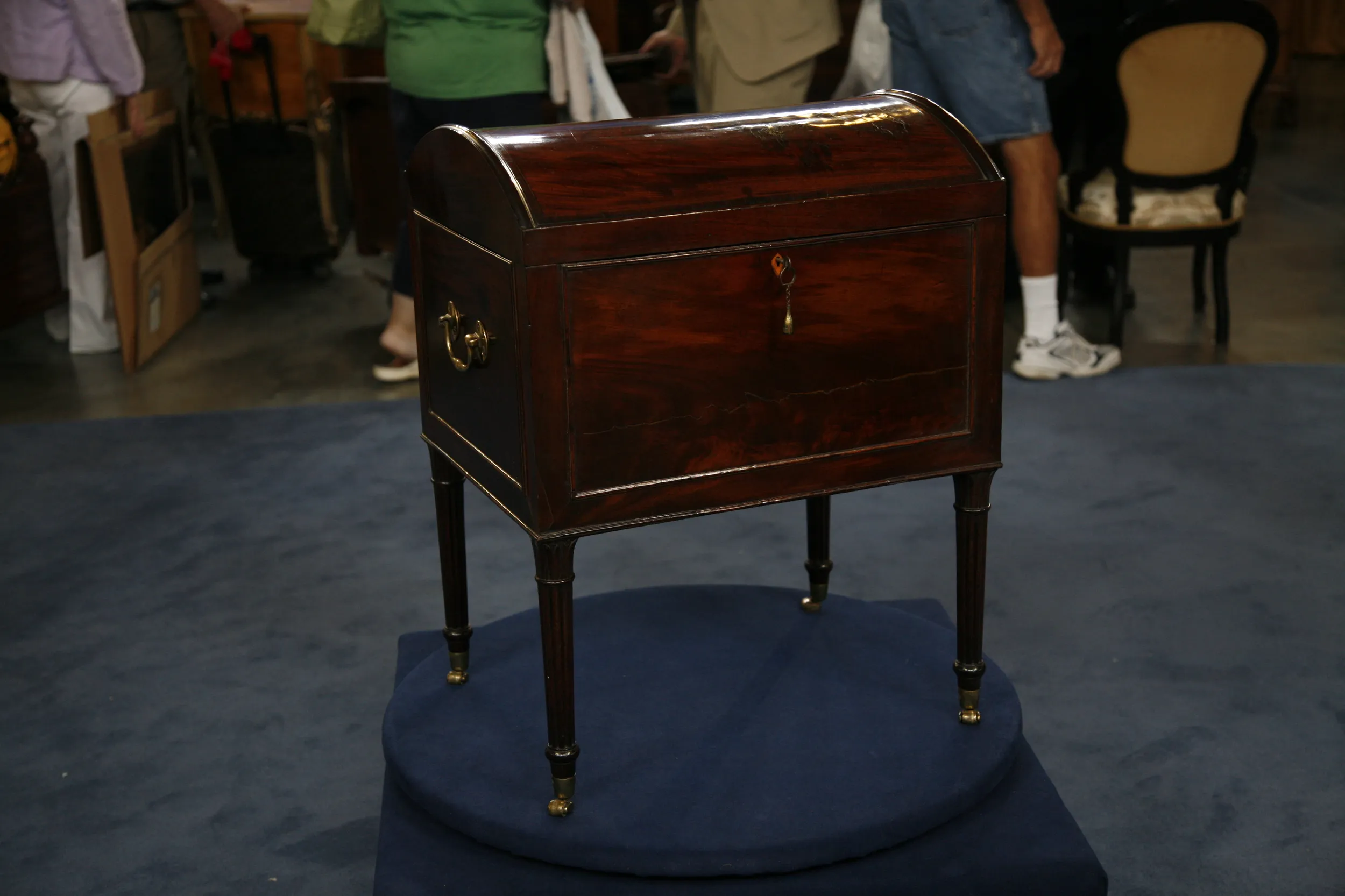
appraisal
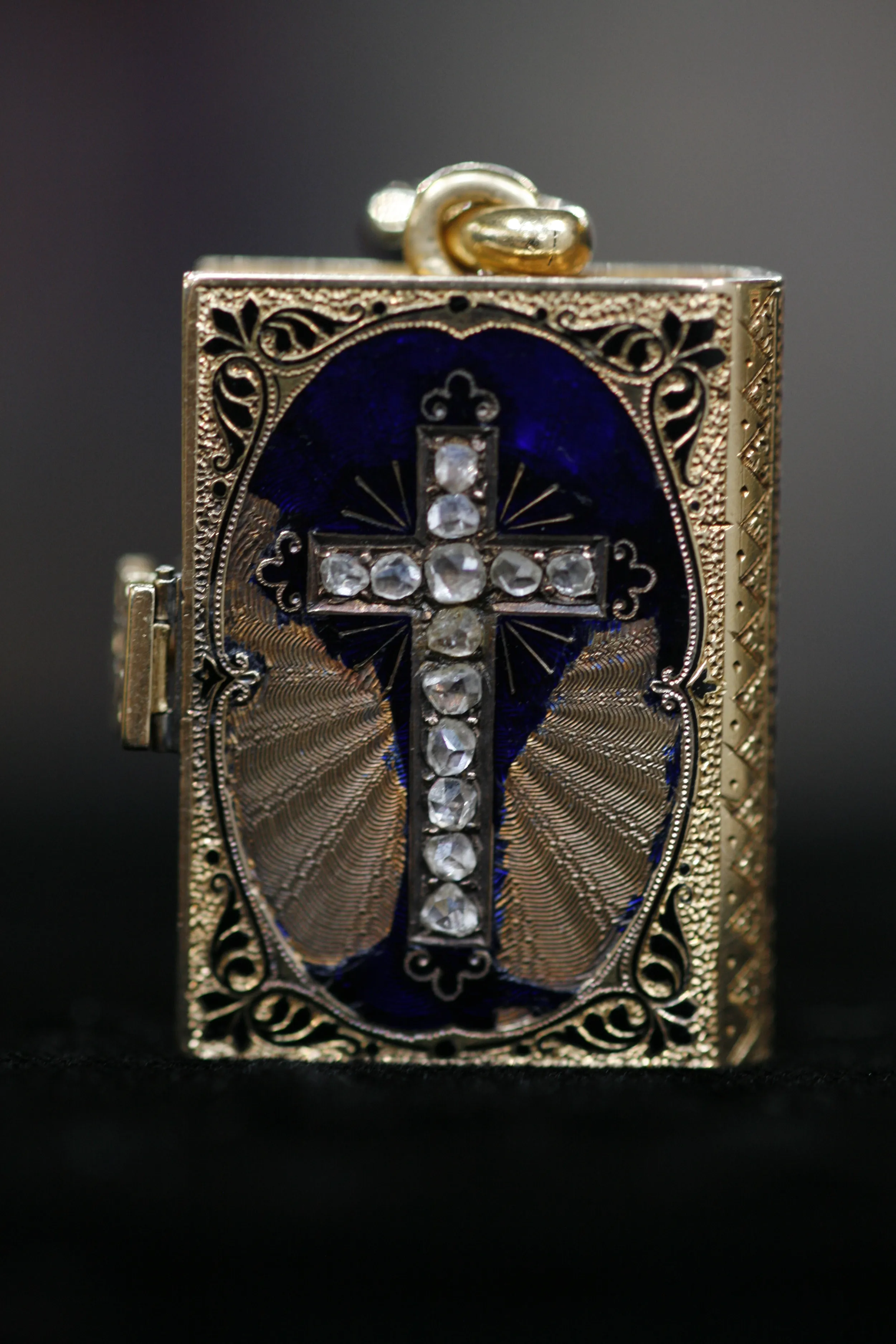
appraisal
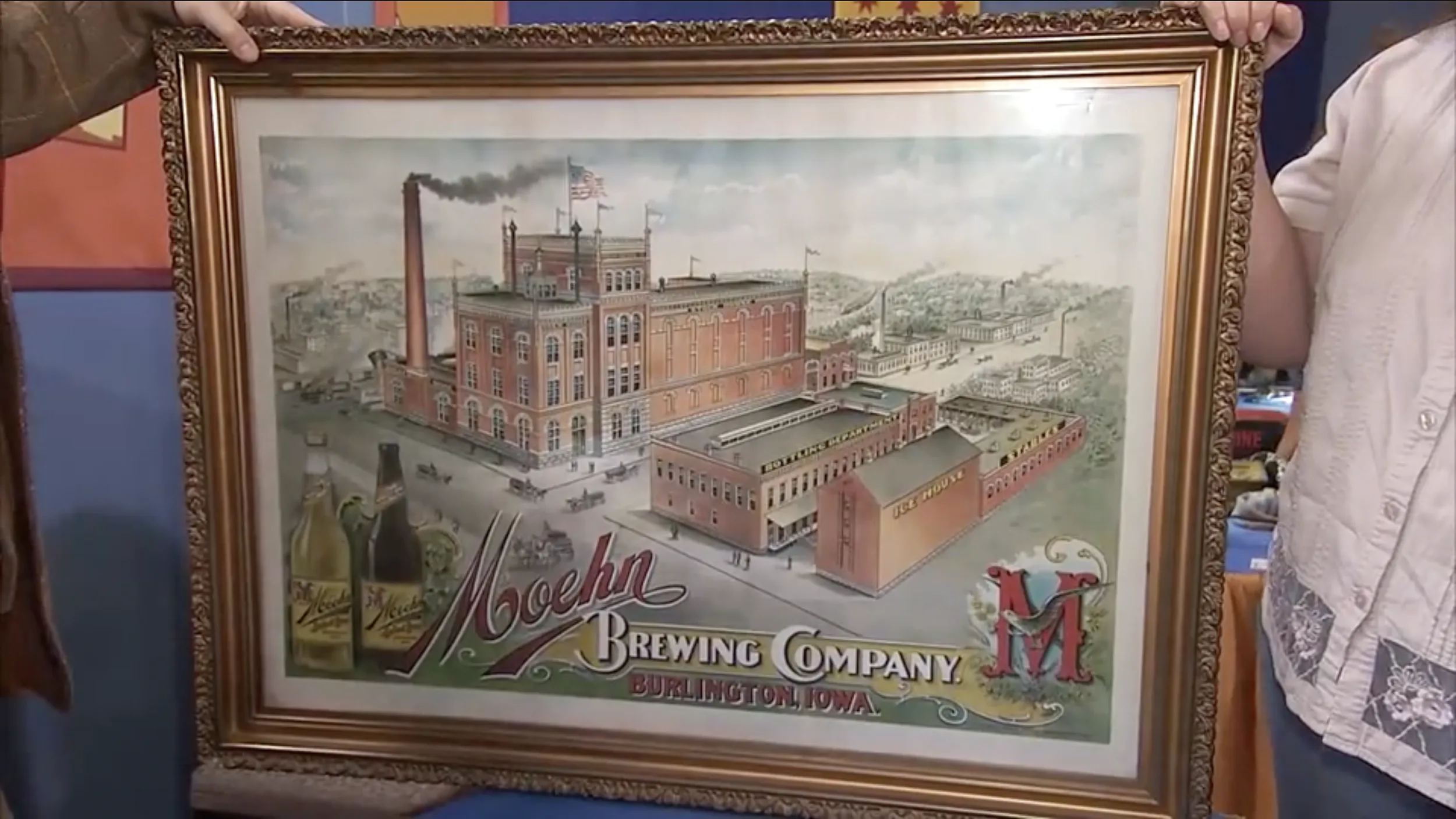
appraisal
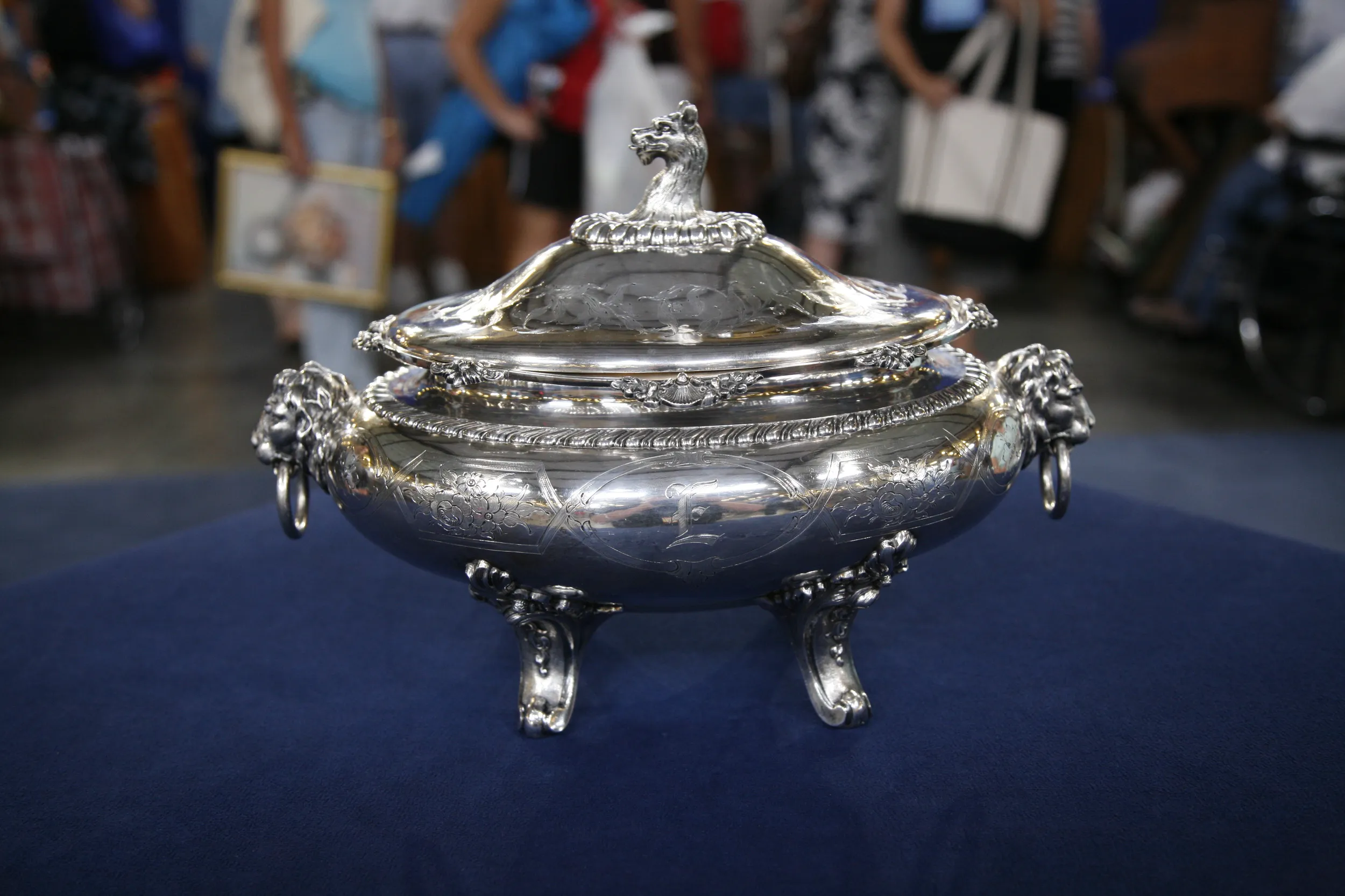
appraisal
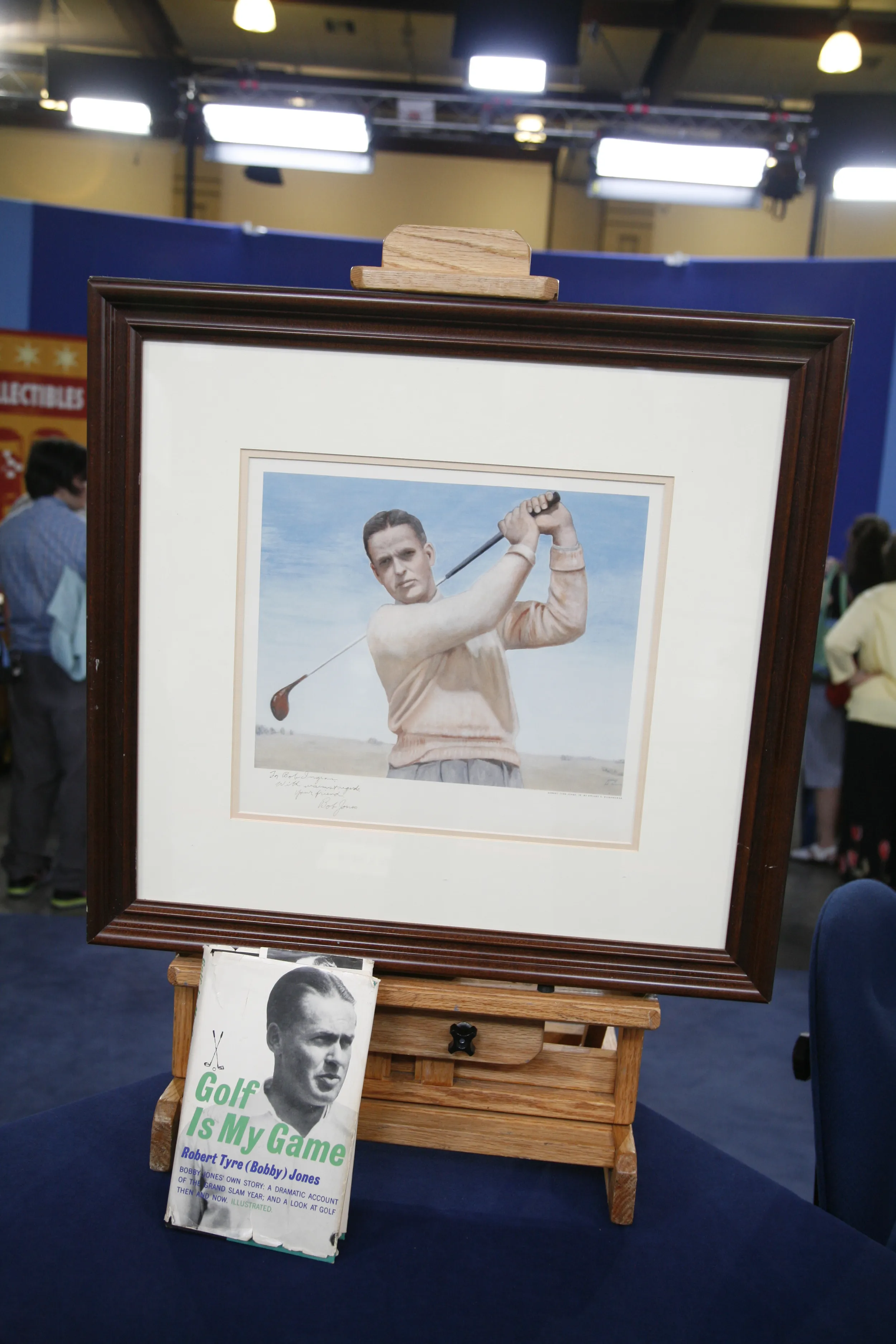
appraisal

appraisal

appraisal
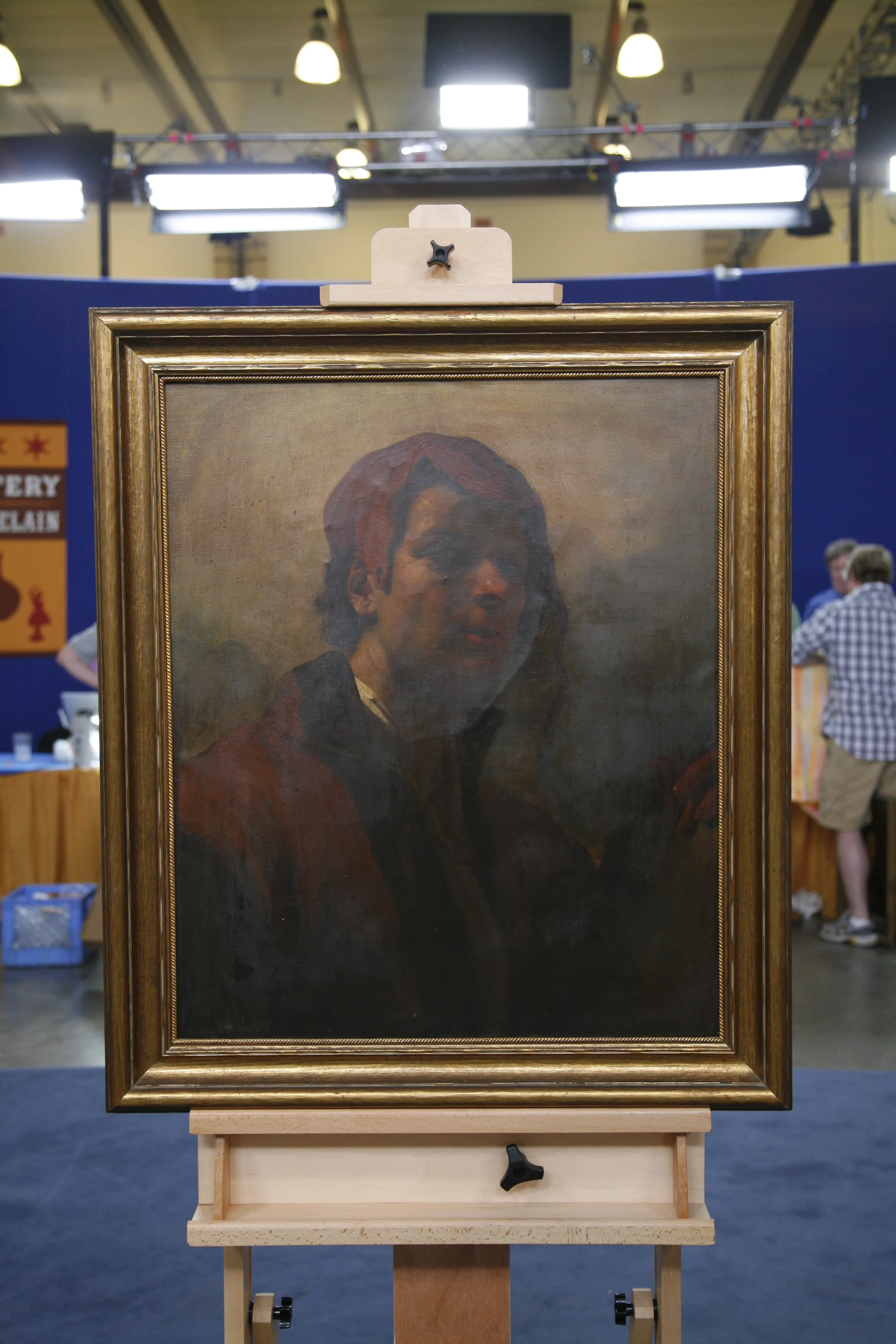
appraisal
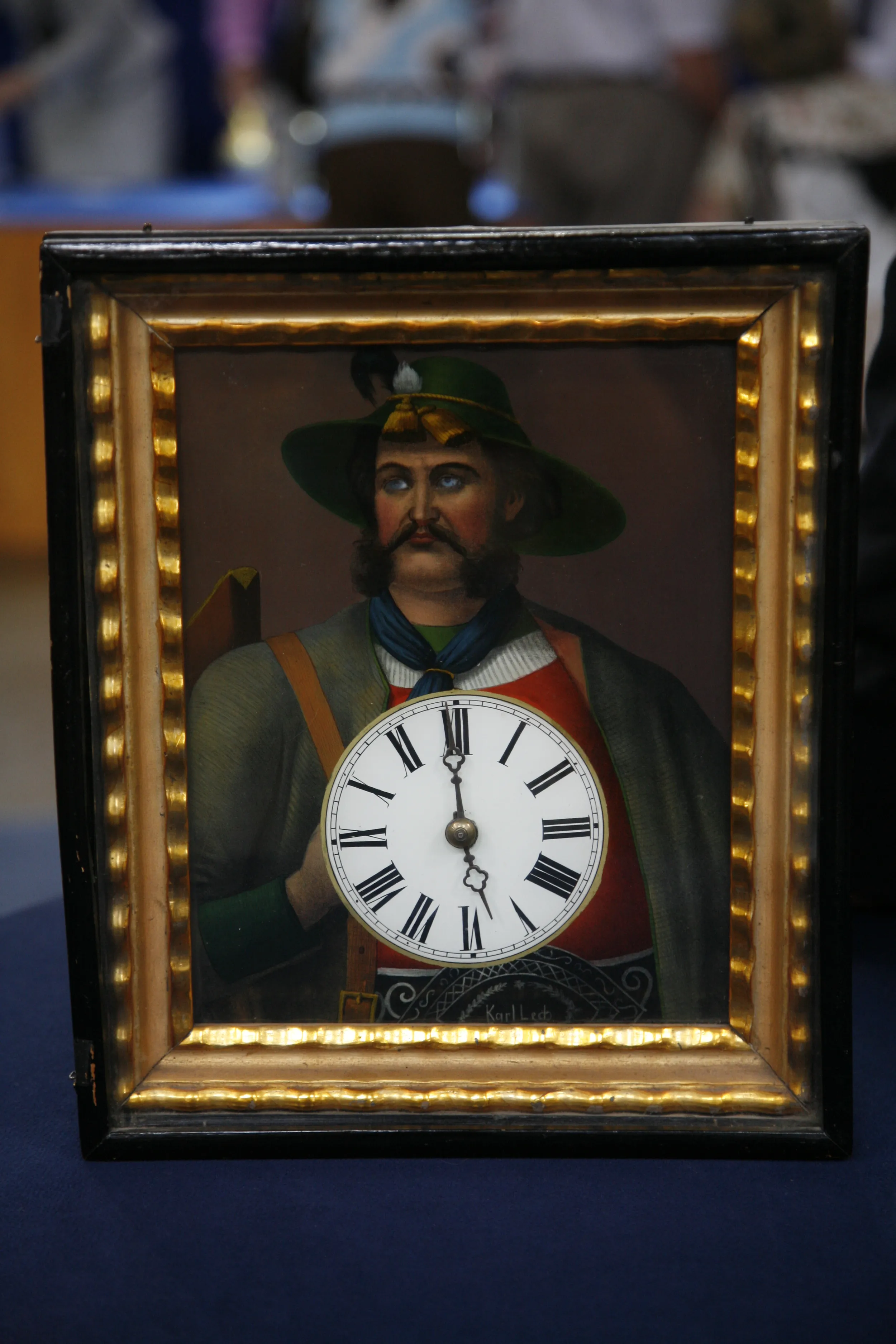
appraisal
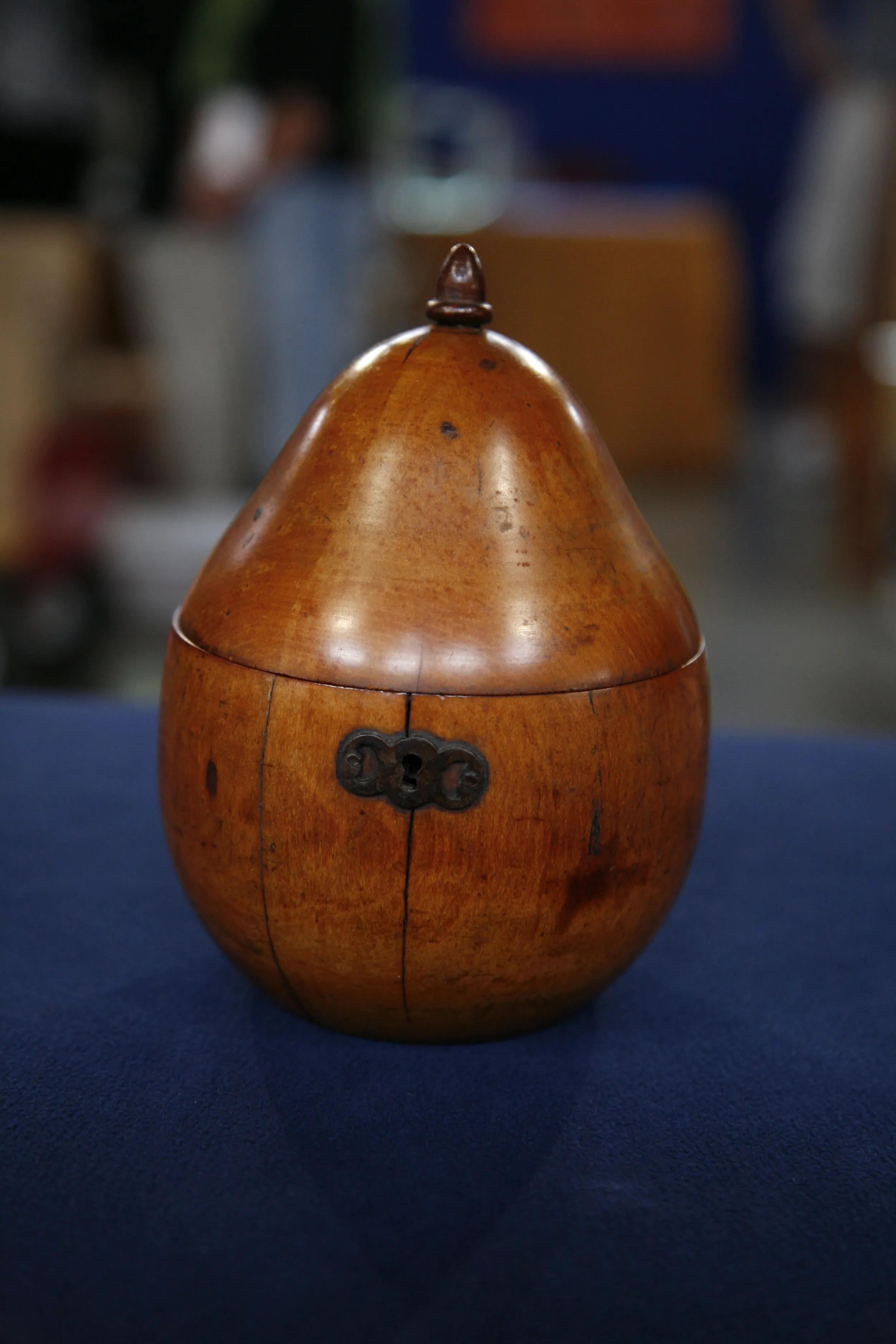
appraisal
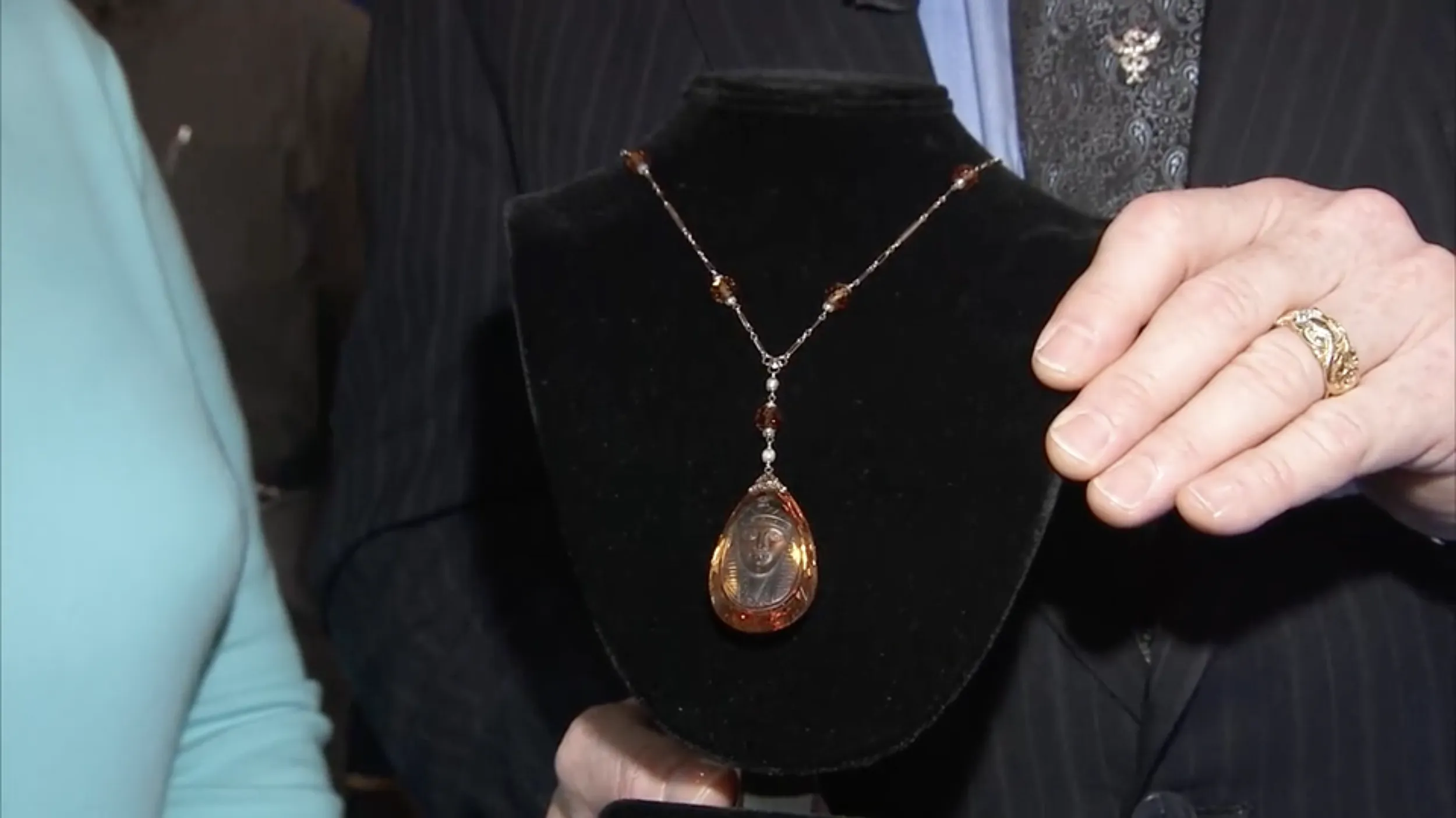
appraisal
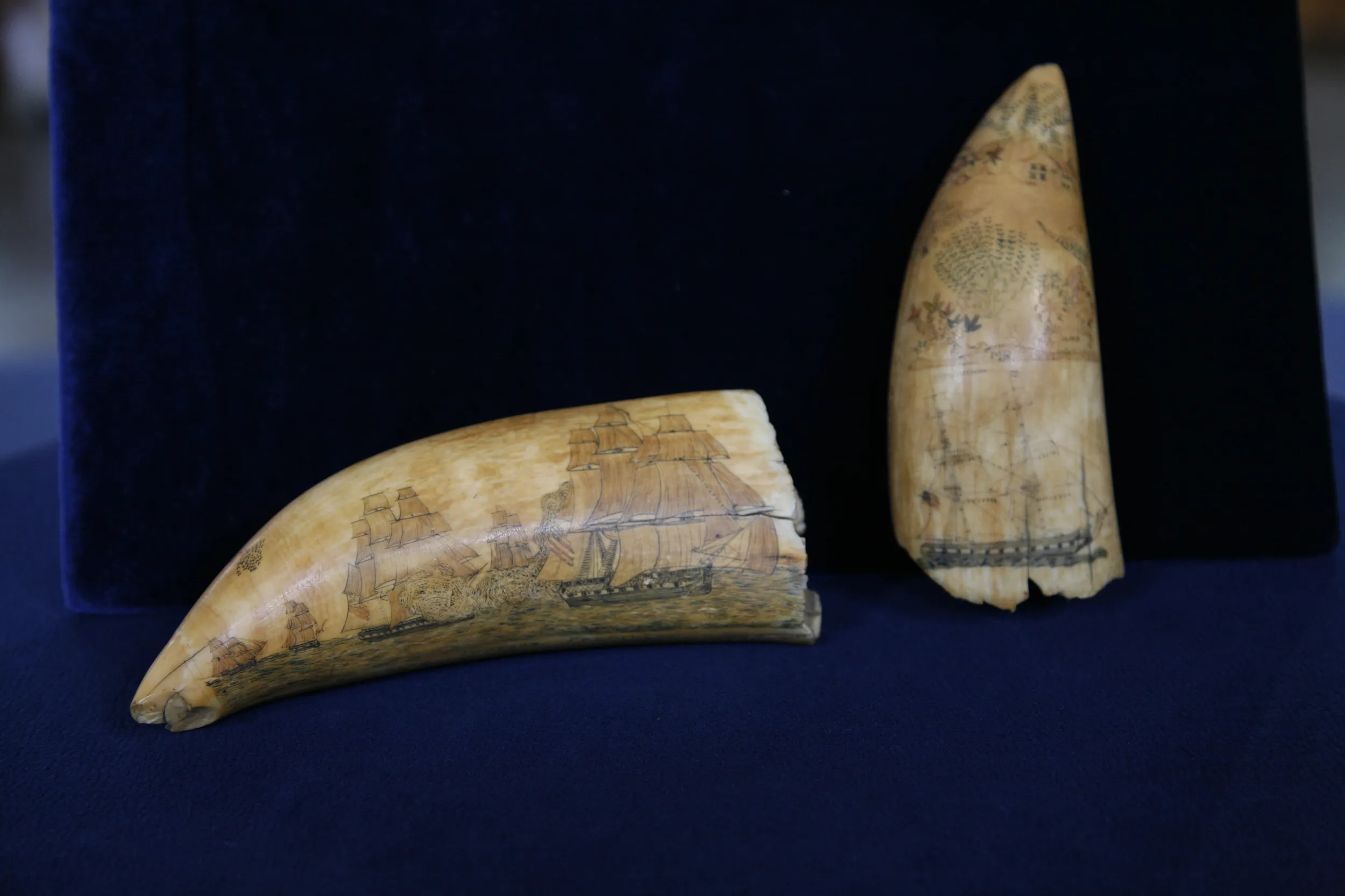
appraisal
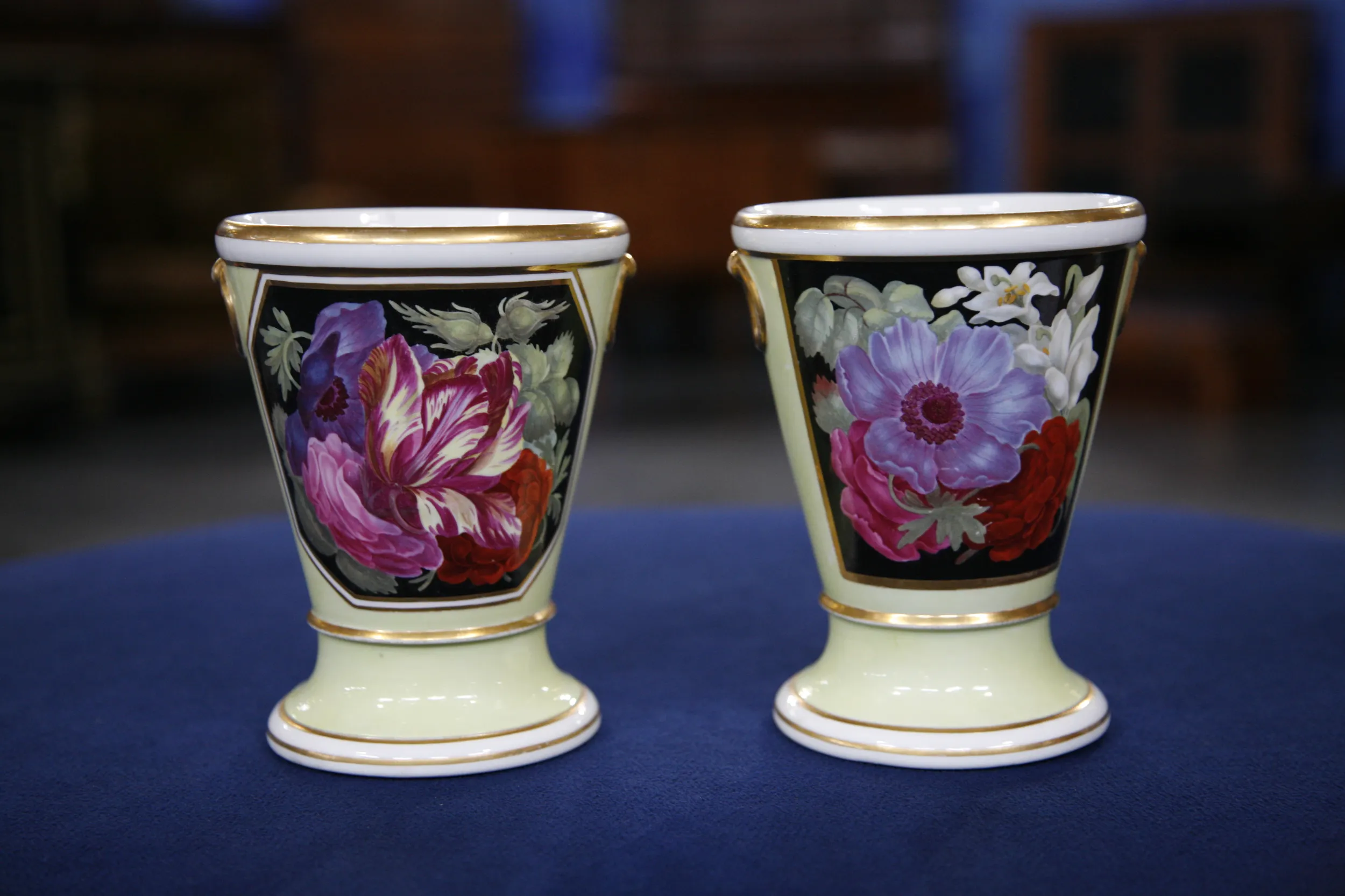
appraisal
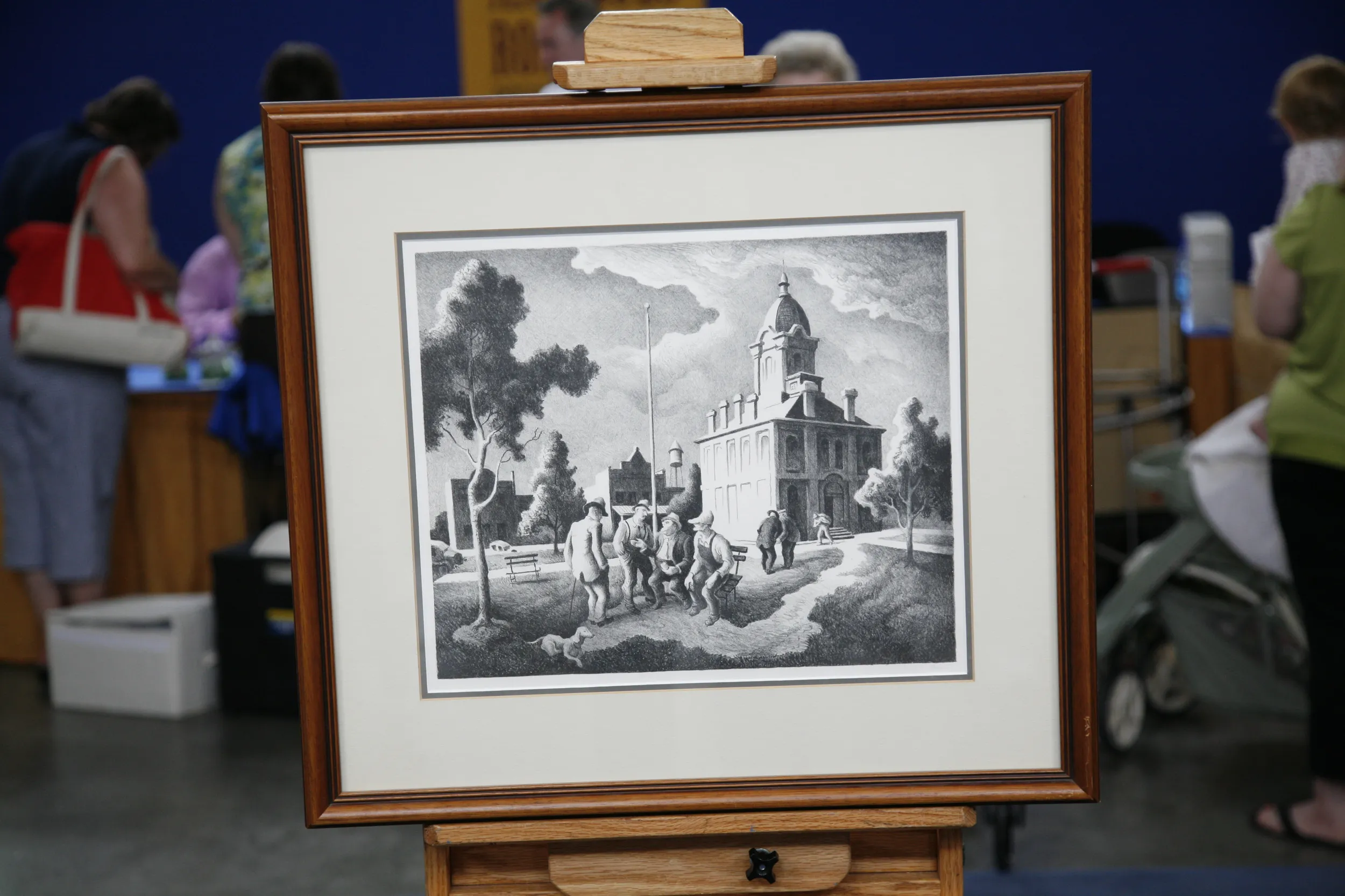
appraisal

appraisal
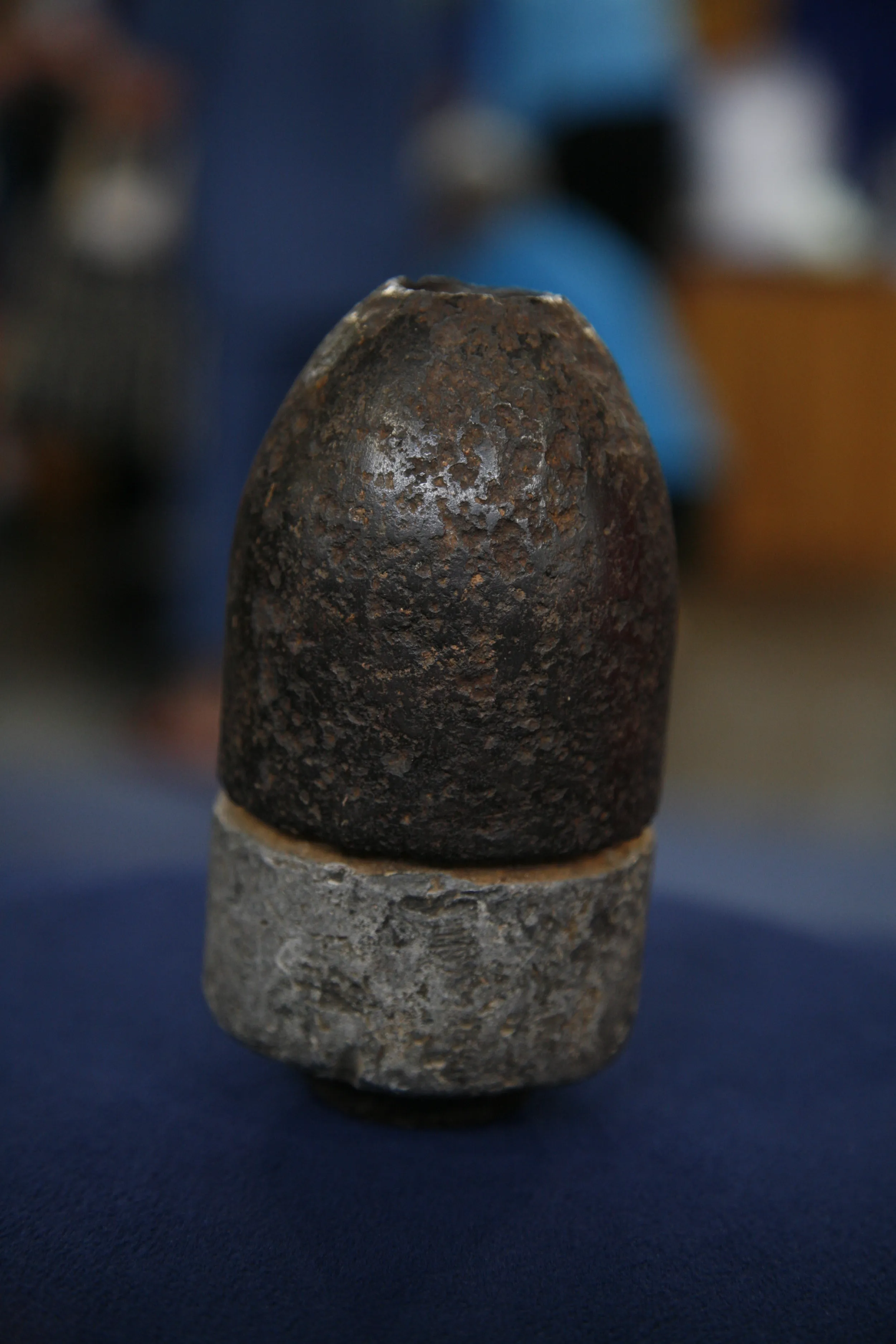
appraisal
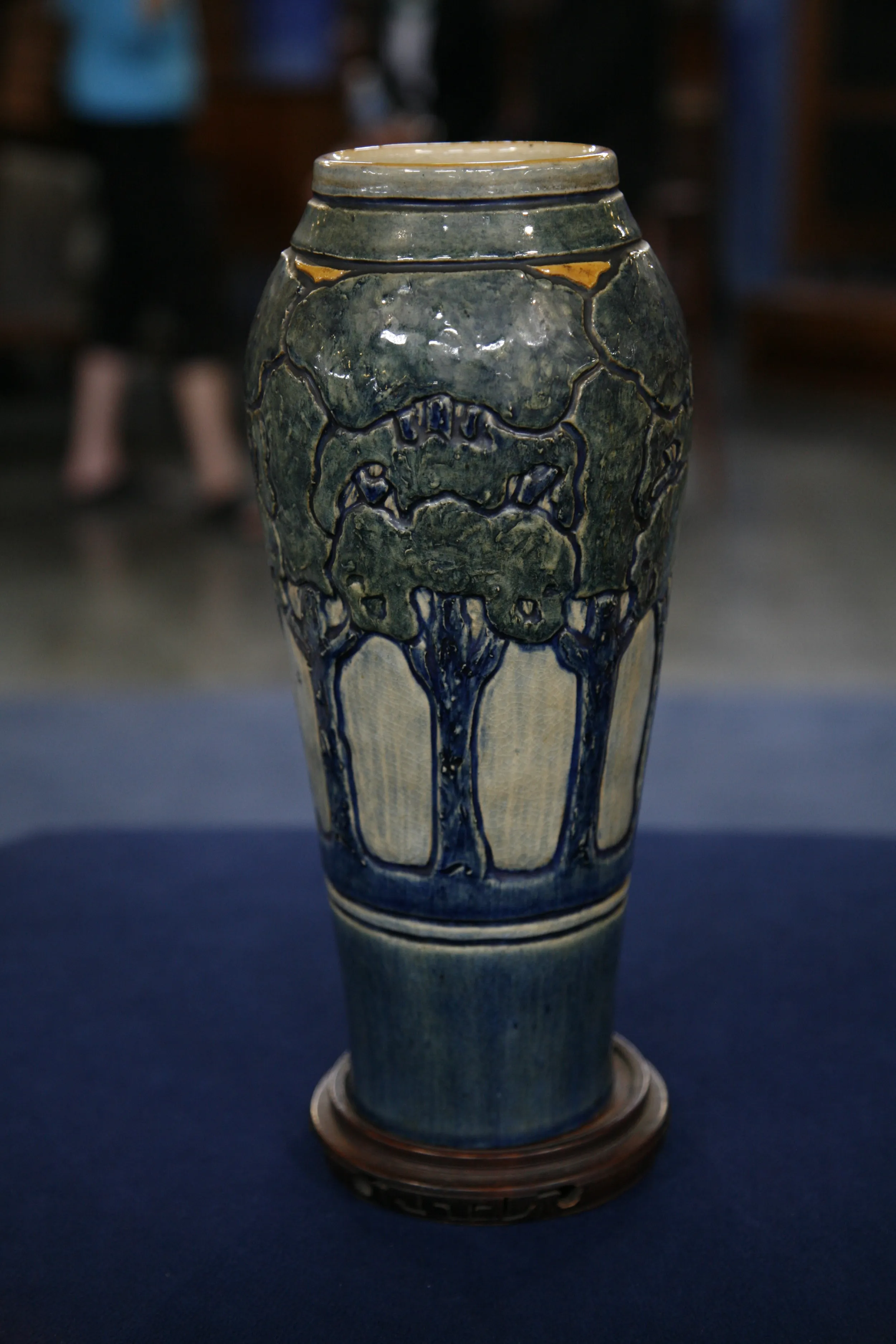
appraisal

appraisal

appraisal
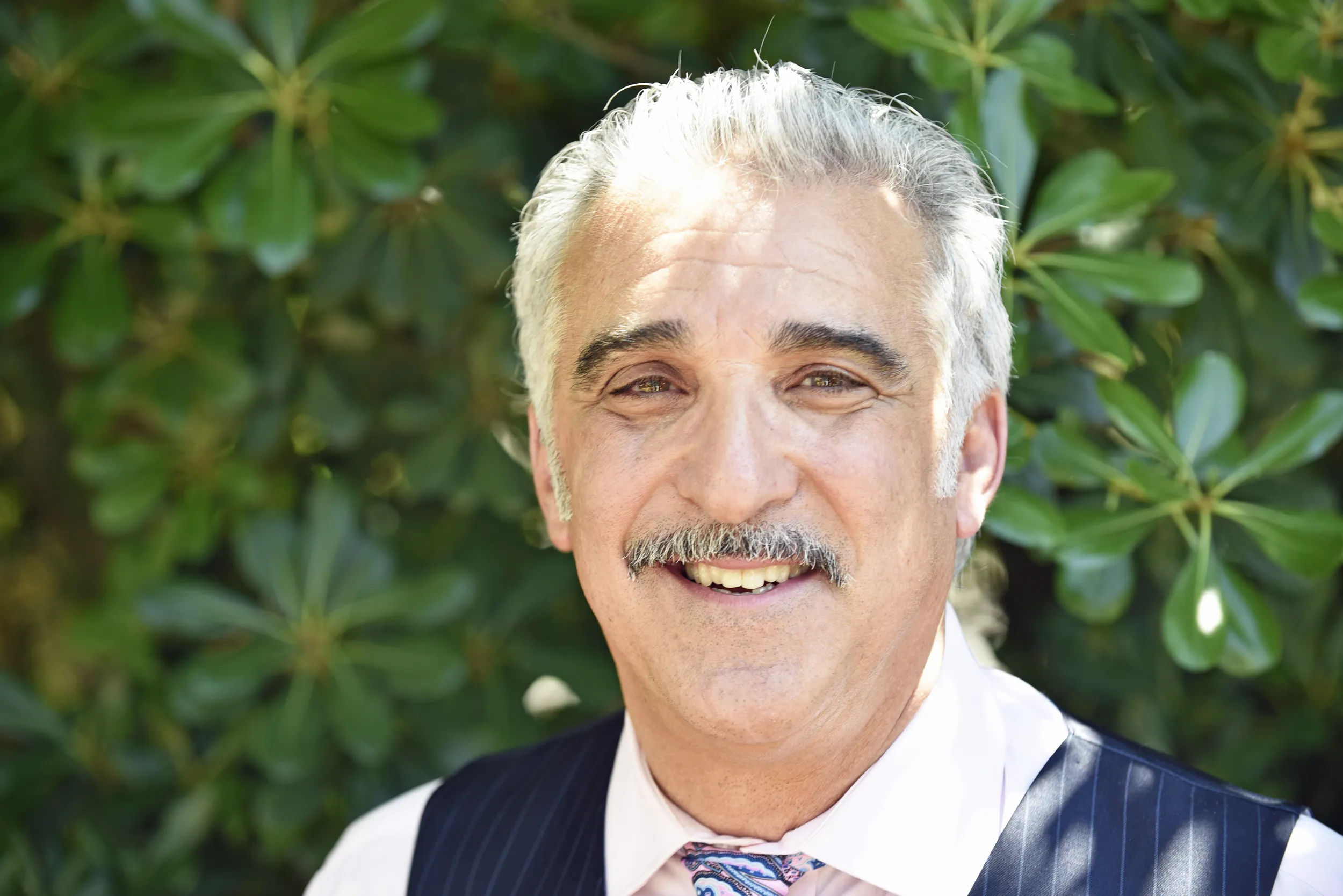
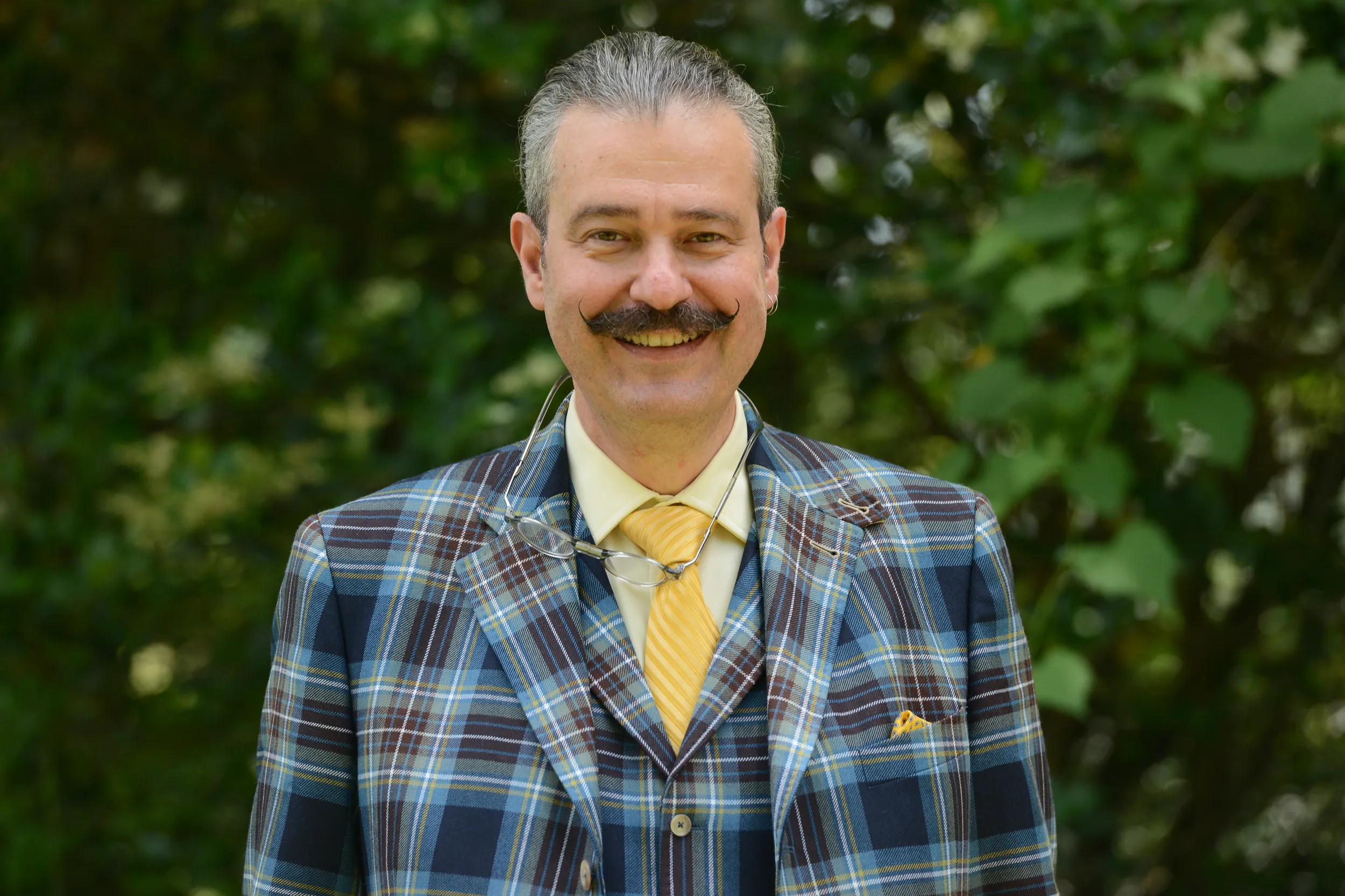









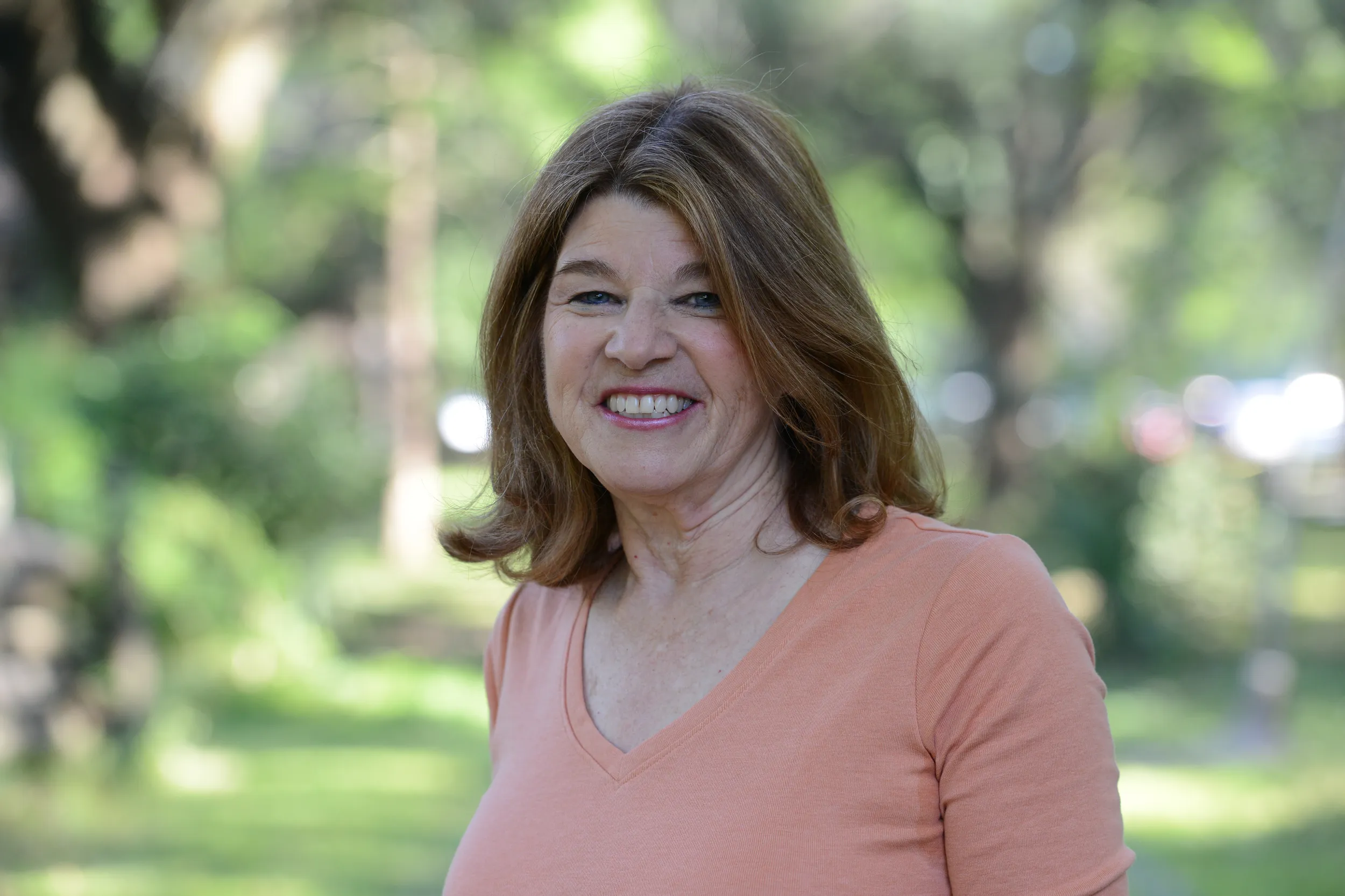
A weekly collection of previews, videos, articles, interviews, and more!
Funding for ANTIQUES ROADSHOW is provided by Ancestry and American Cruise Lines. Additional funding is provided by public television viewers.
ANTIQUES ROADSHOW is a trademark of the BBC and is produced for PBS by GBH under license from BBC, Worldwide. PBS is a 501(c)(3) not-for-profit organization.
A weekly collection of previews, videos, articles, interviews, and more!
Test your appraisal knowledge in ROADSHOW's new game — Price Range!









